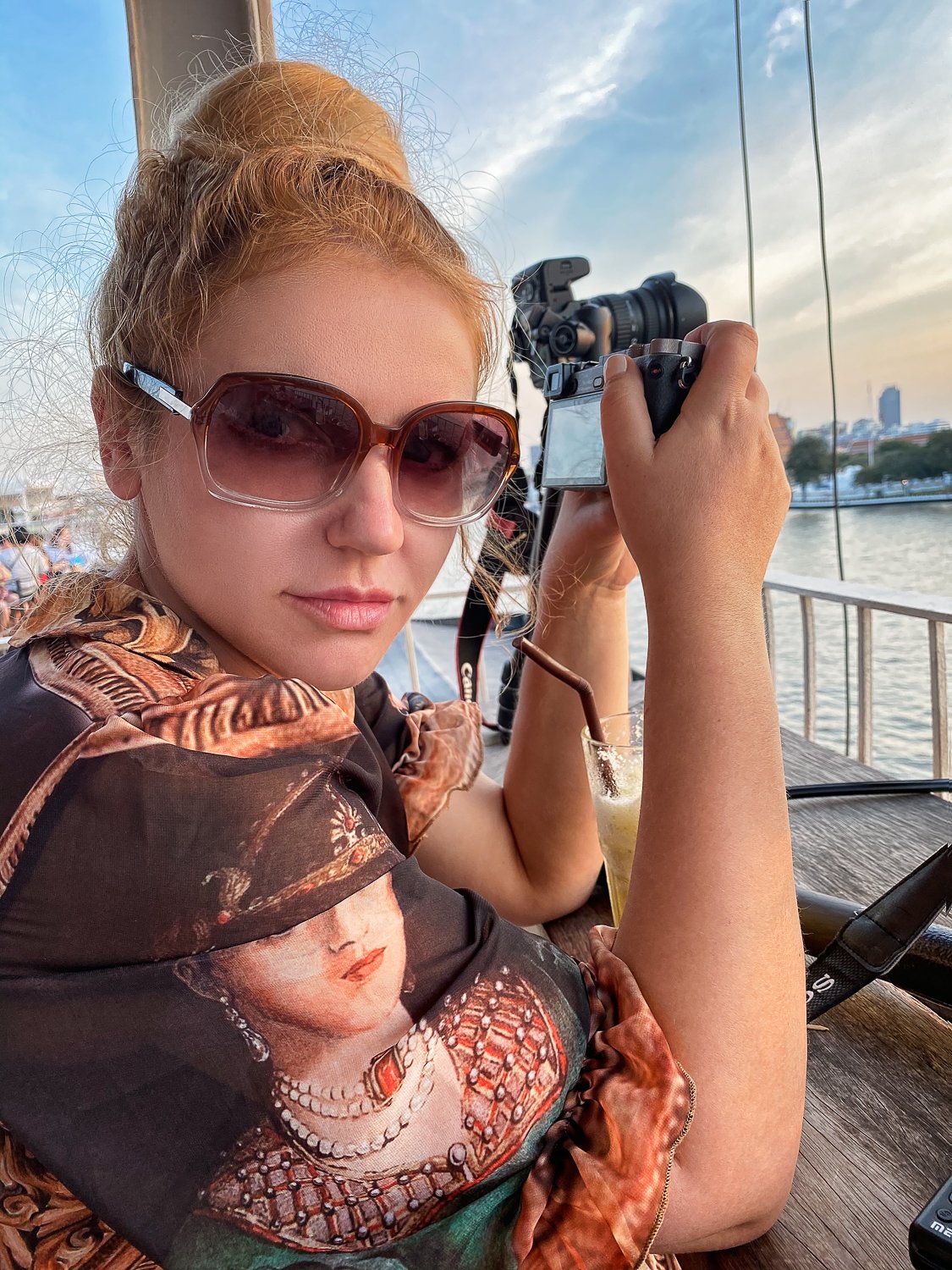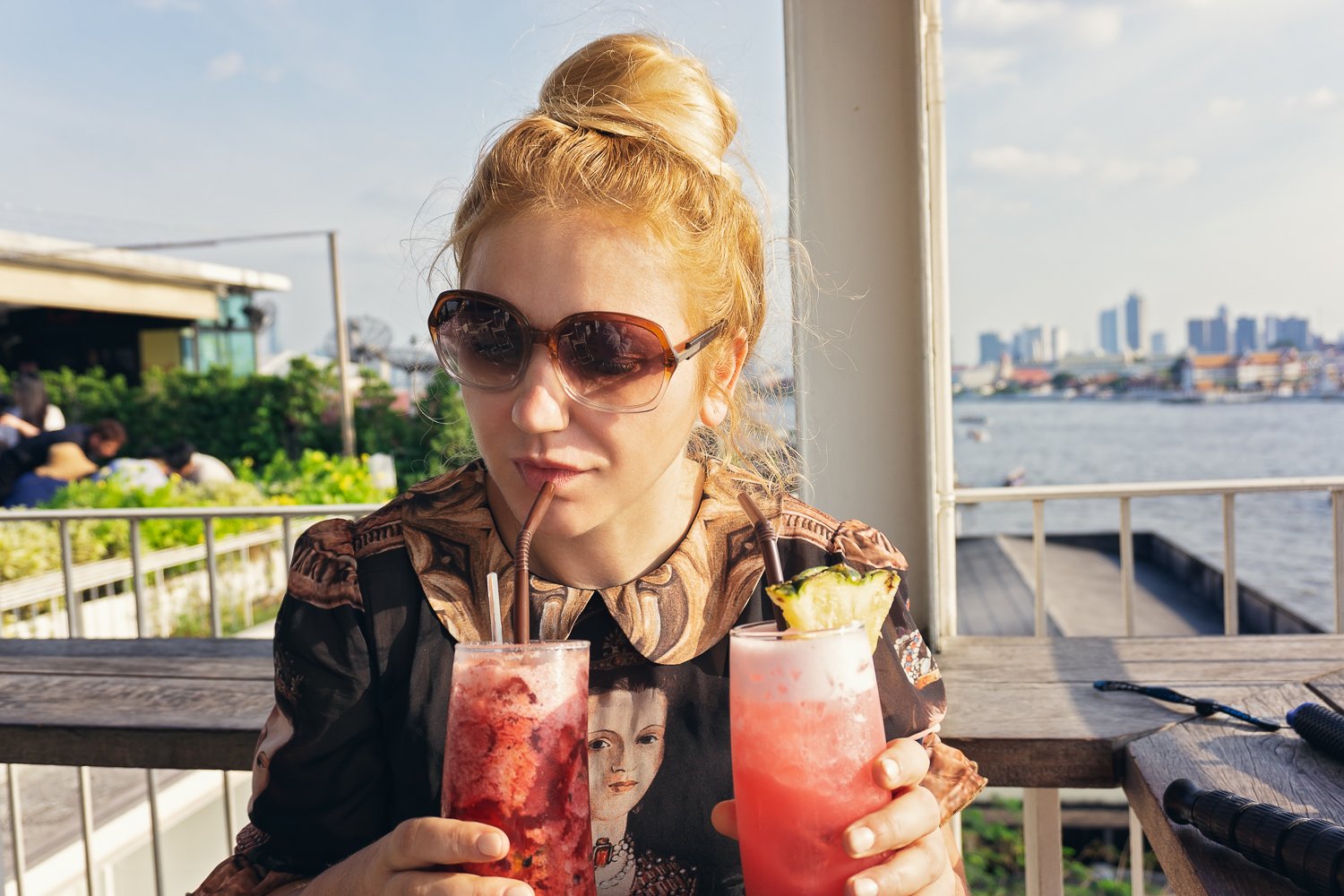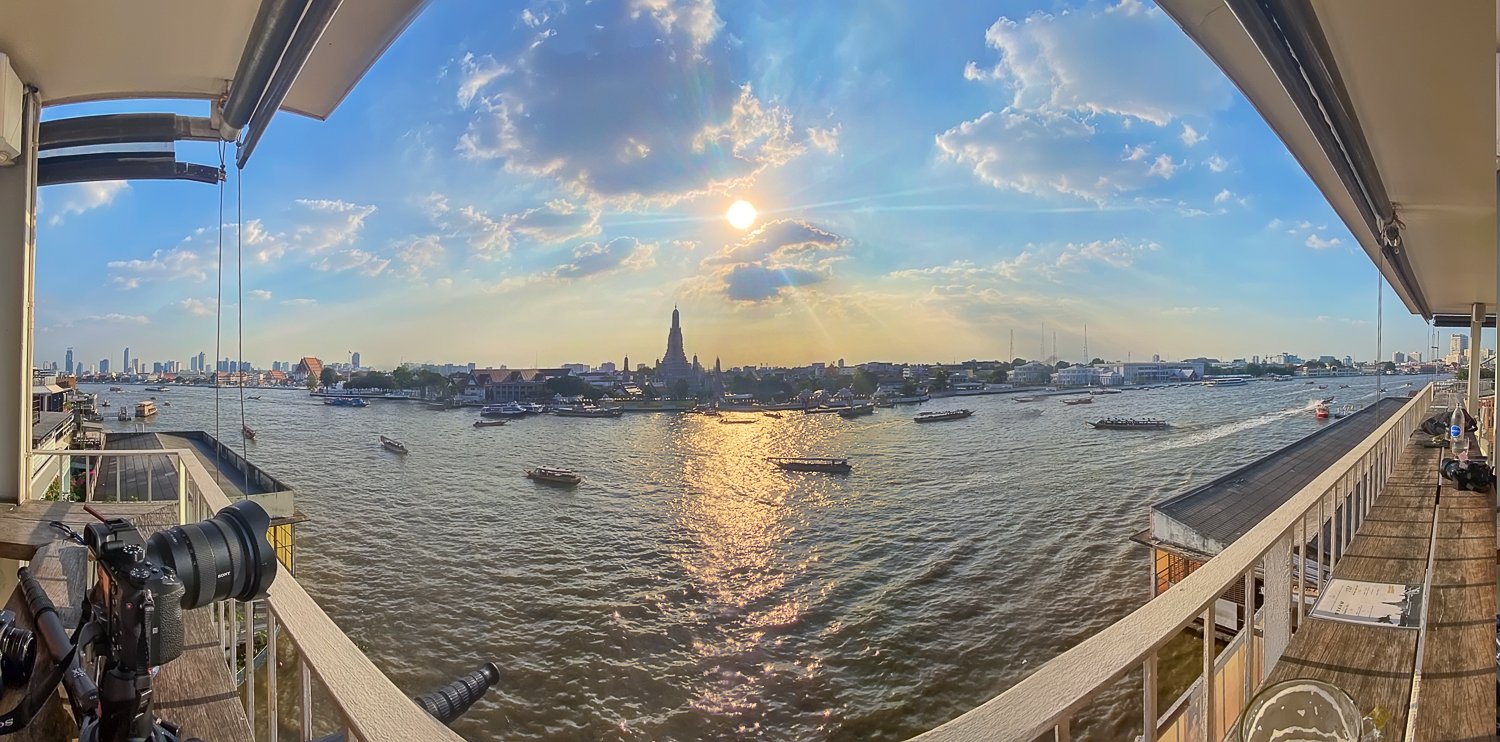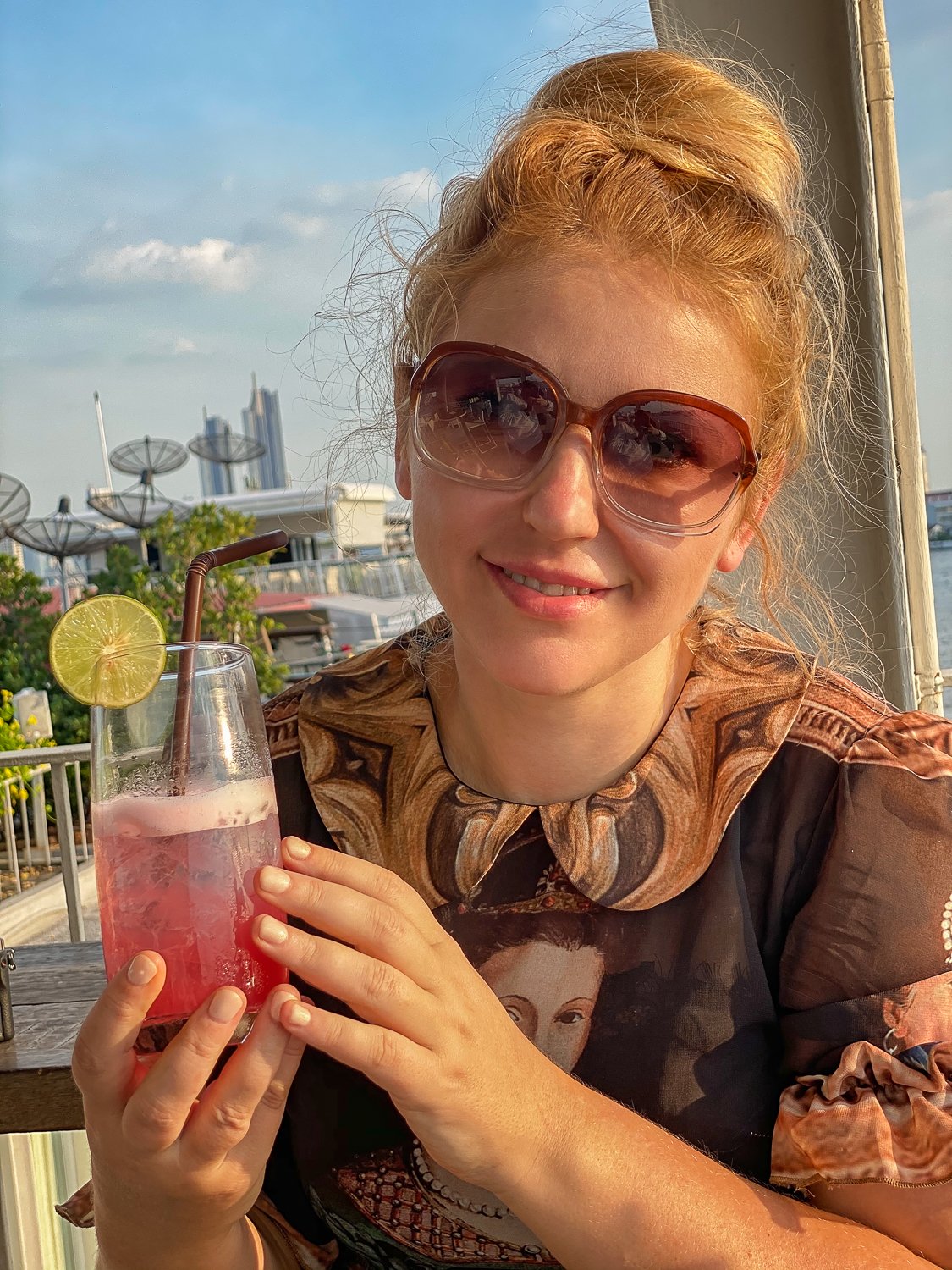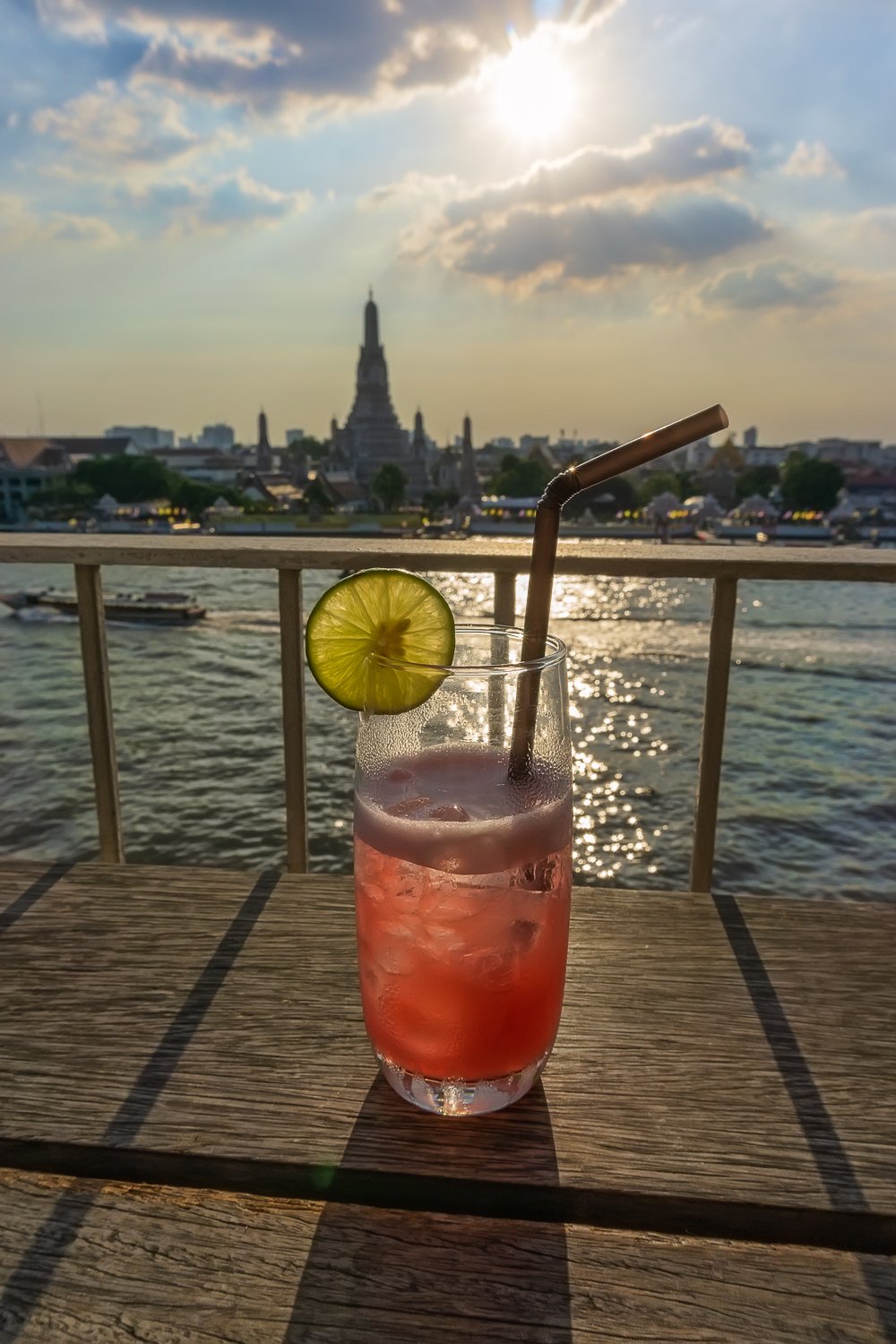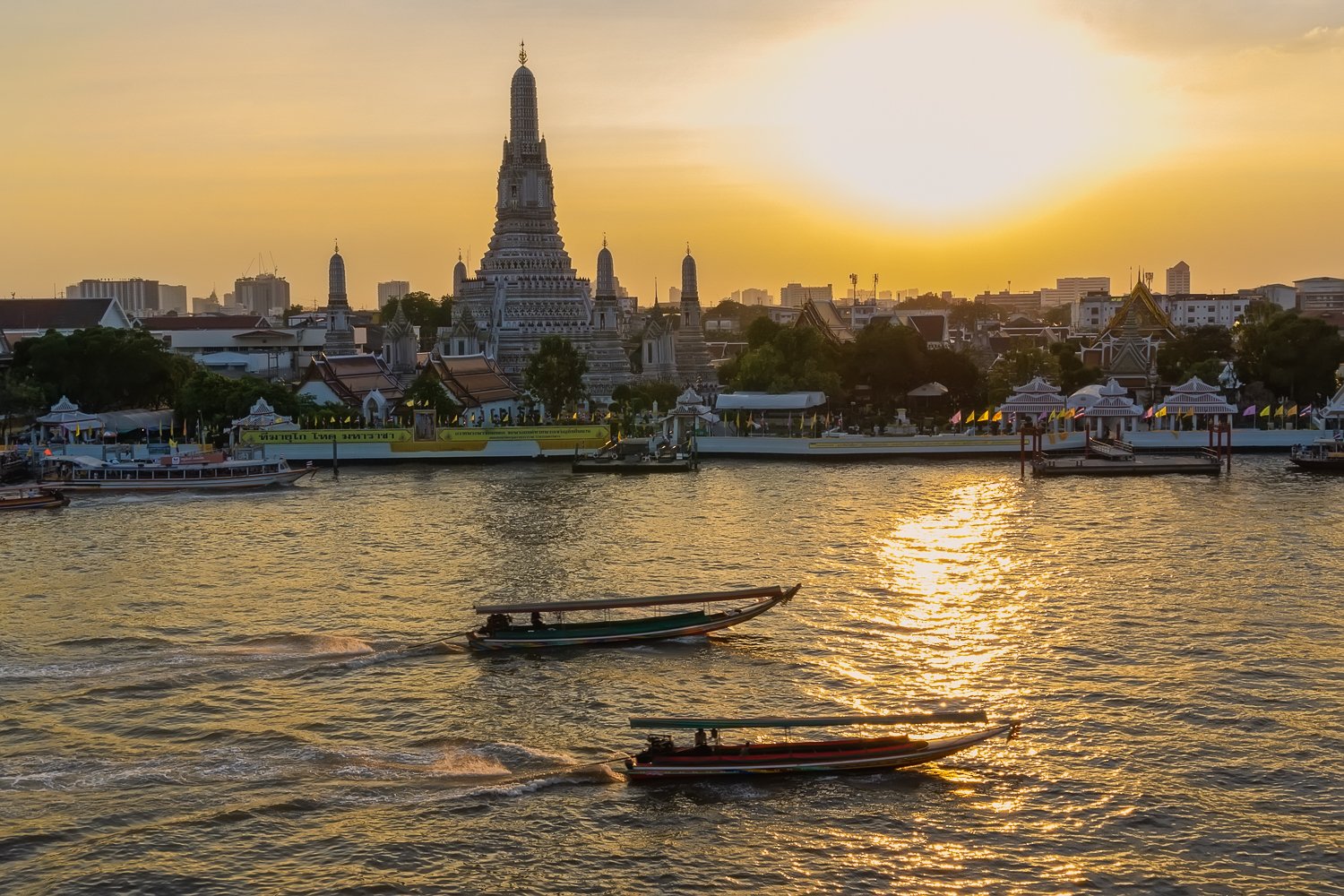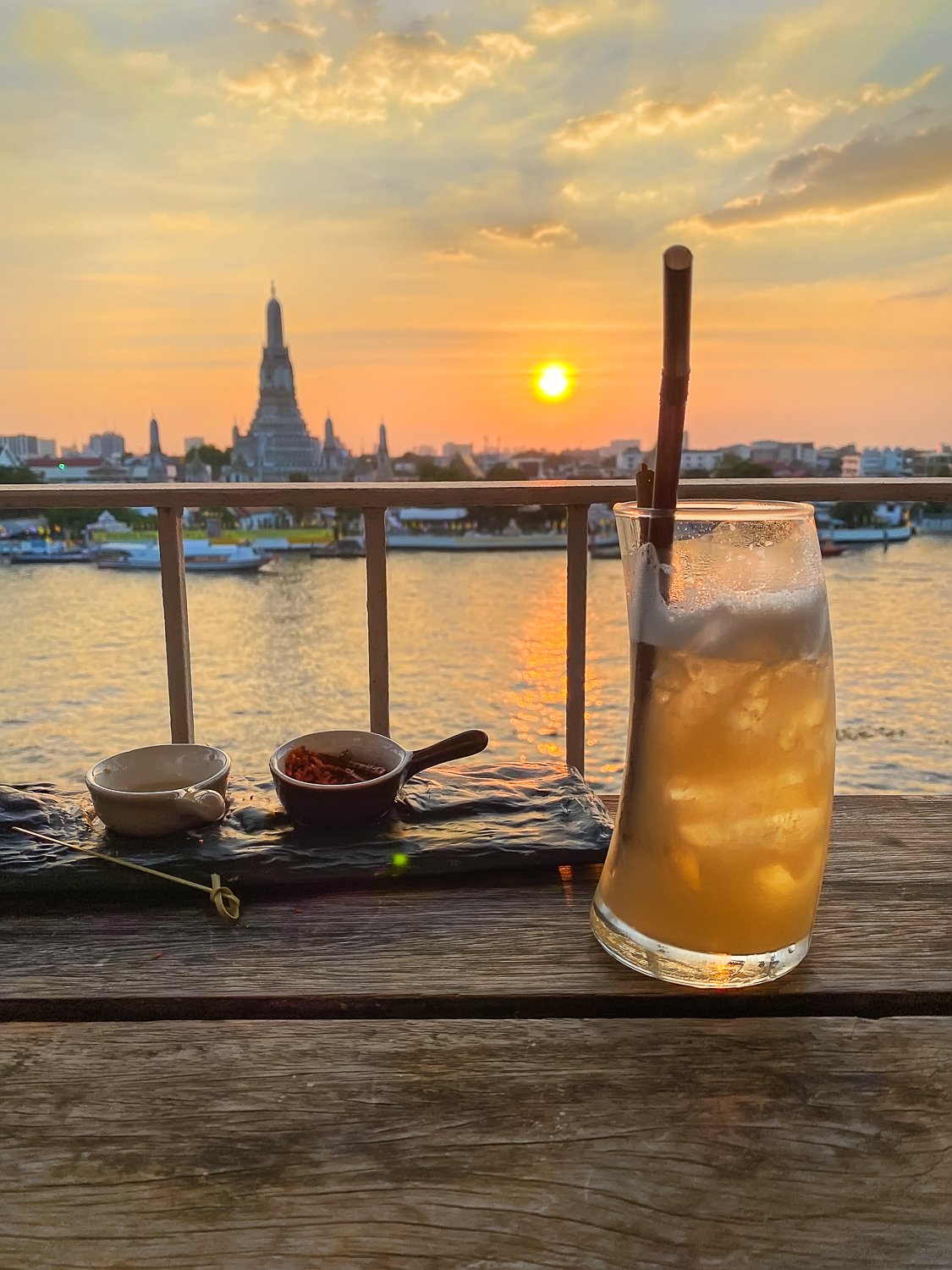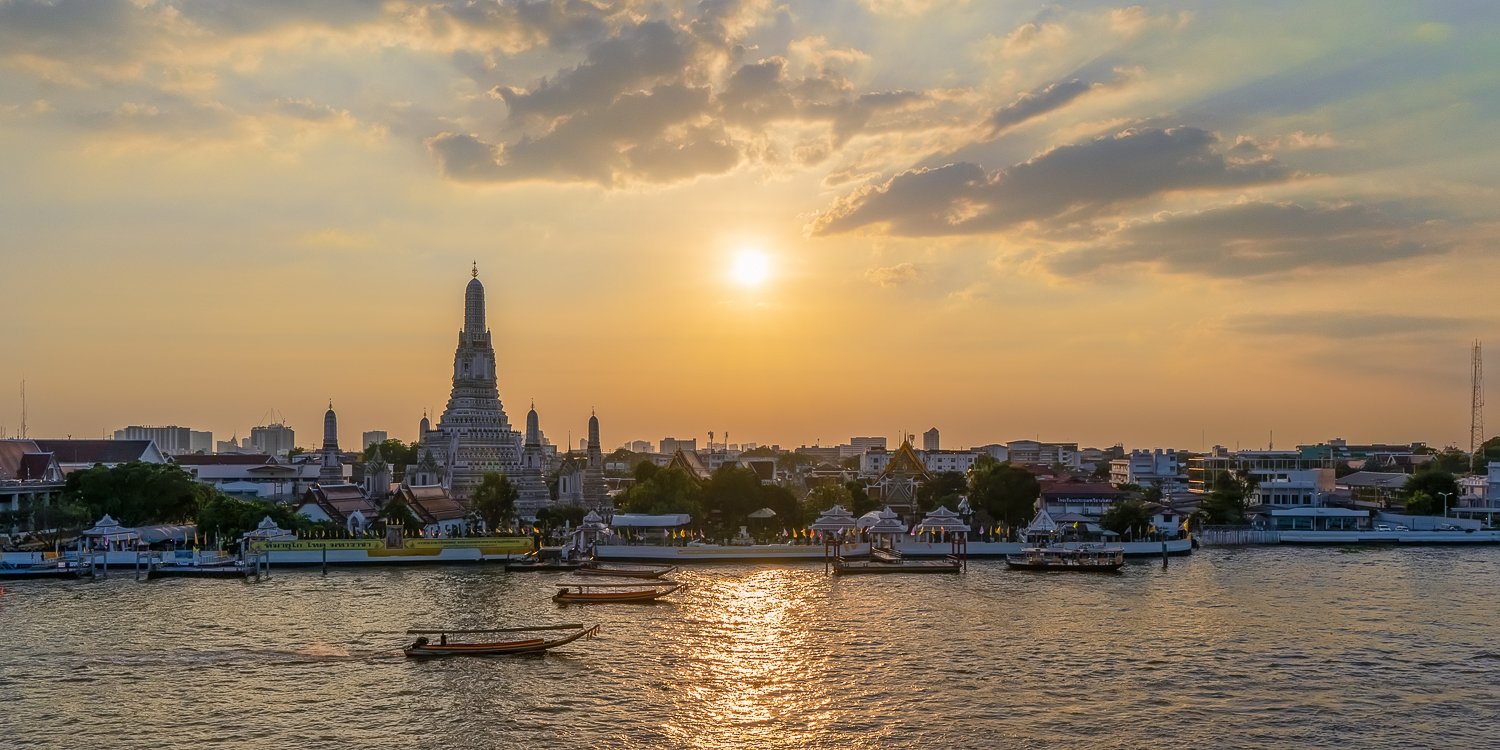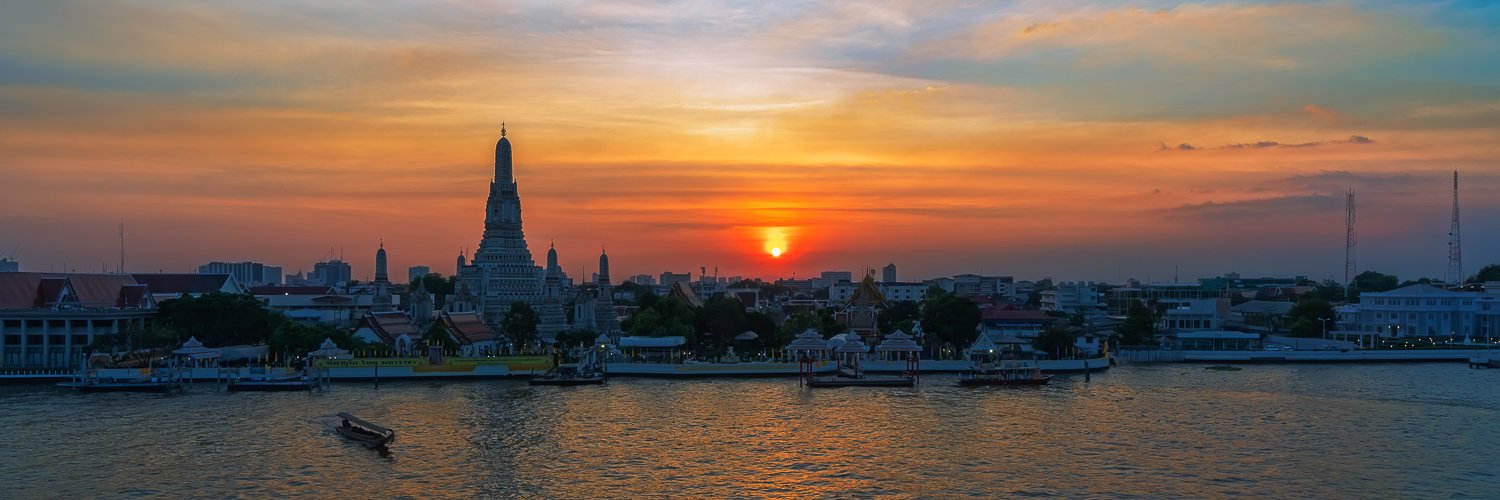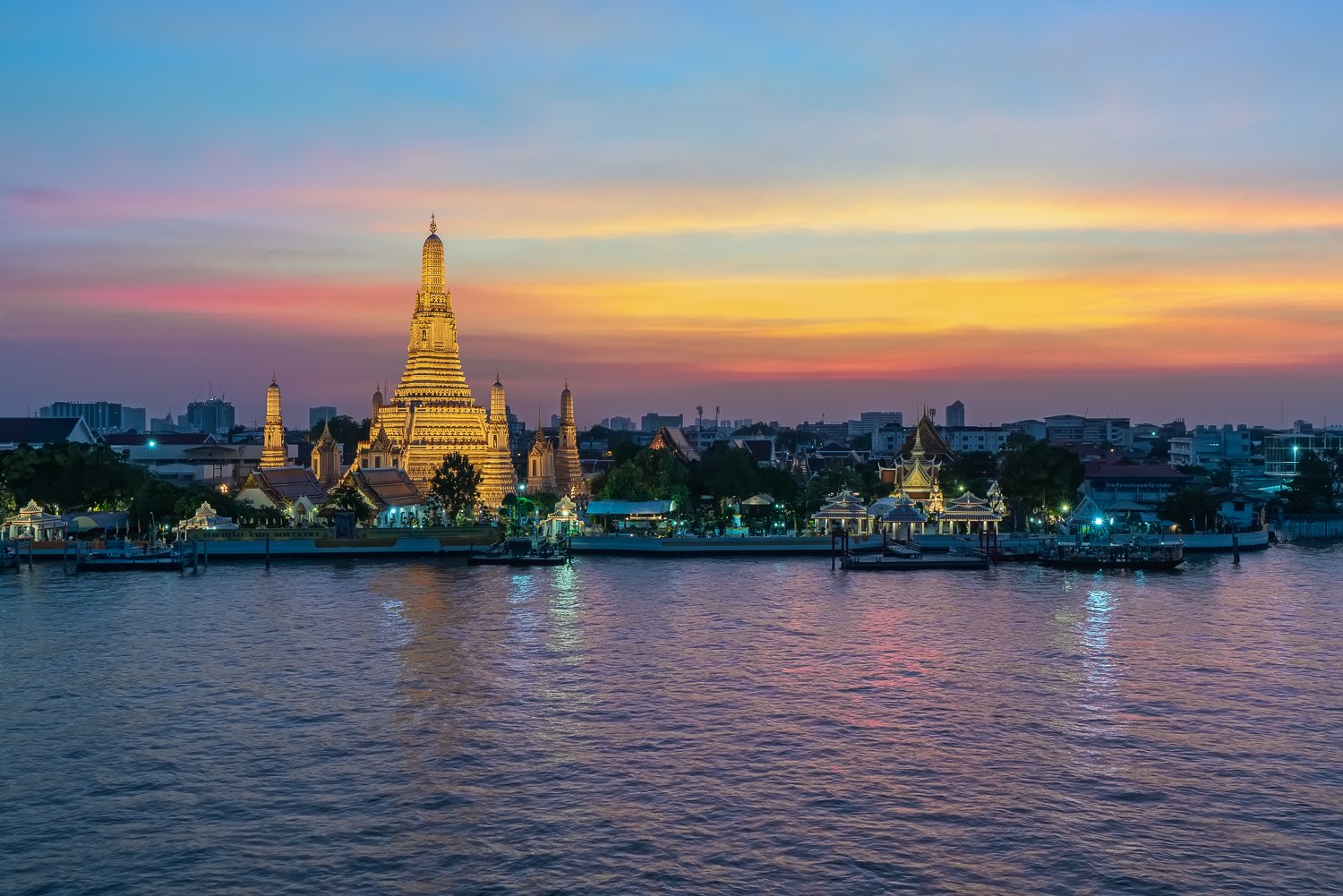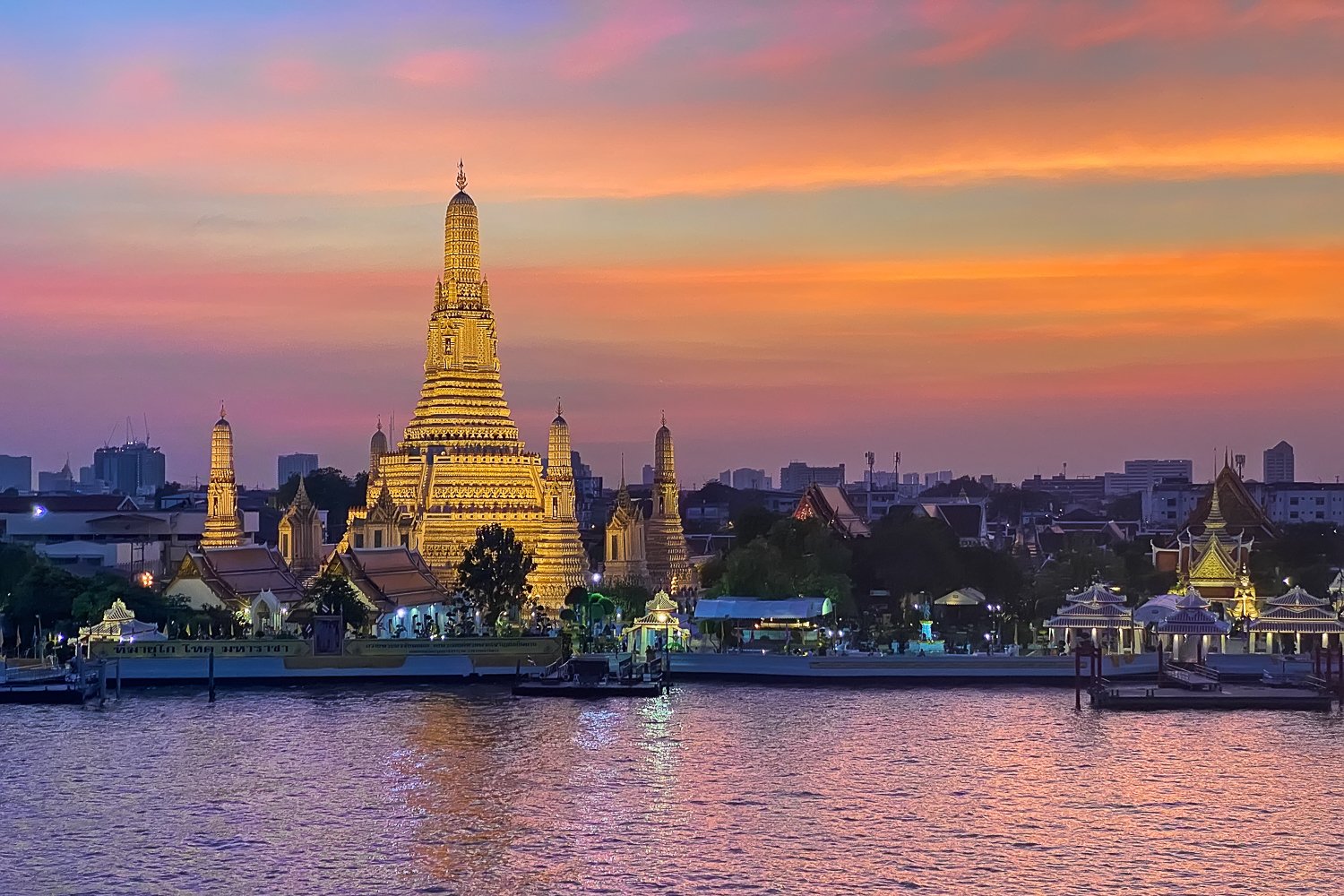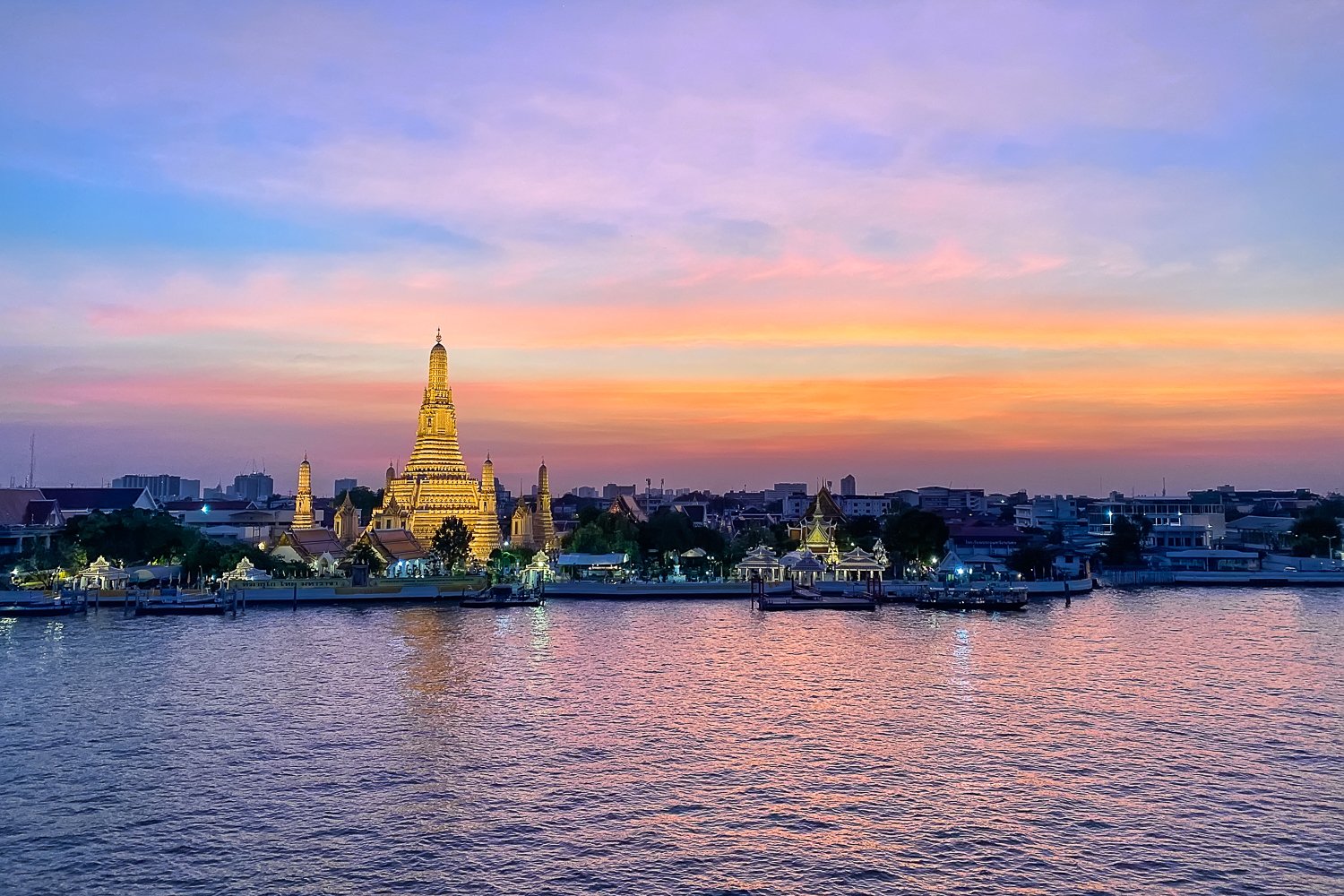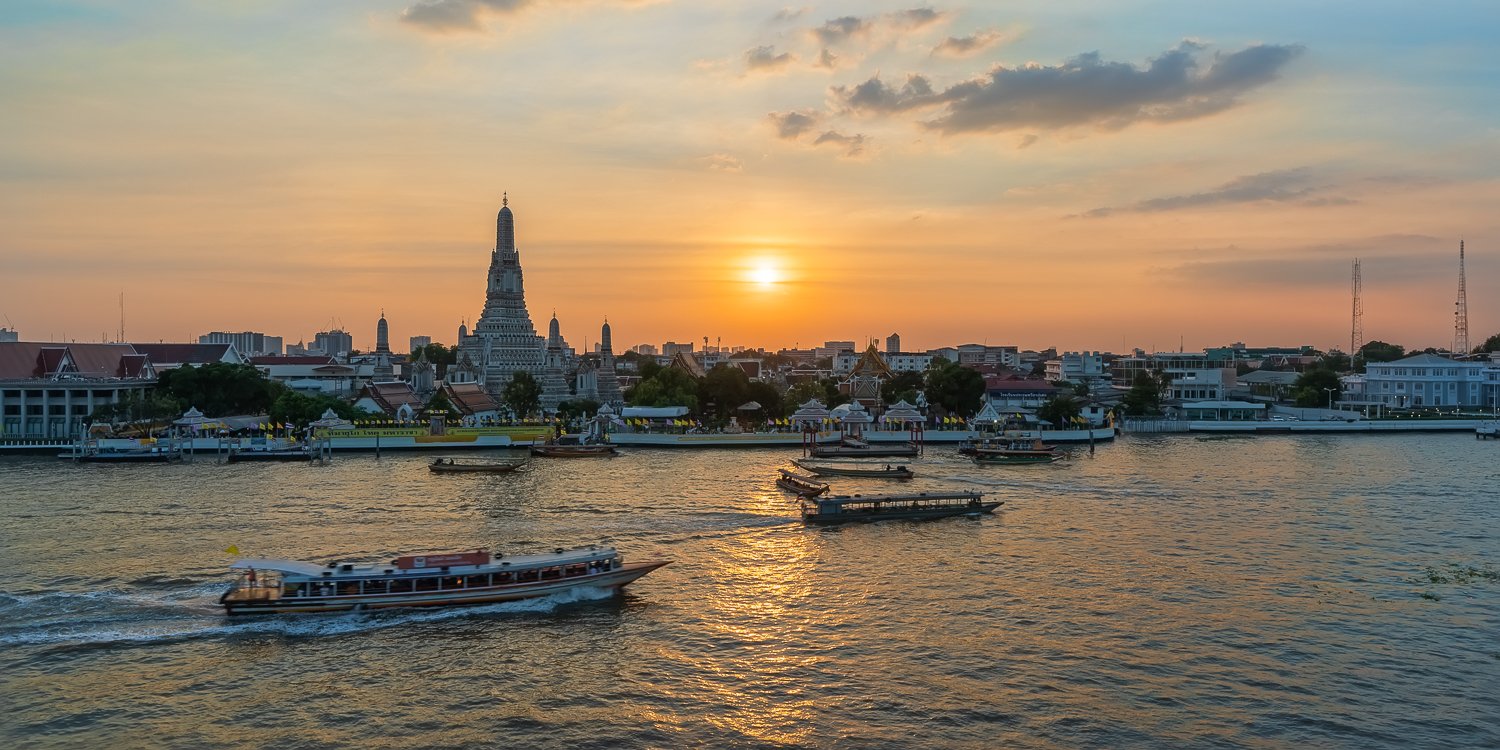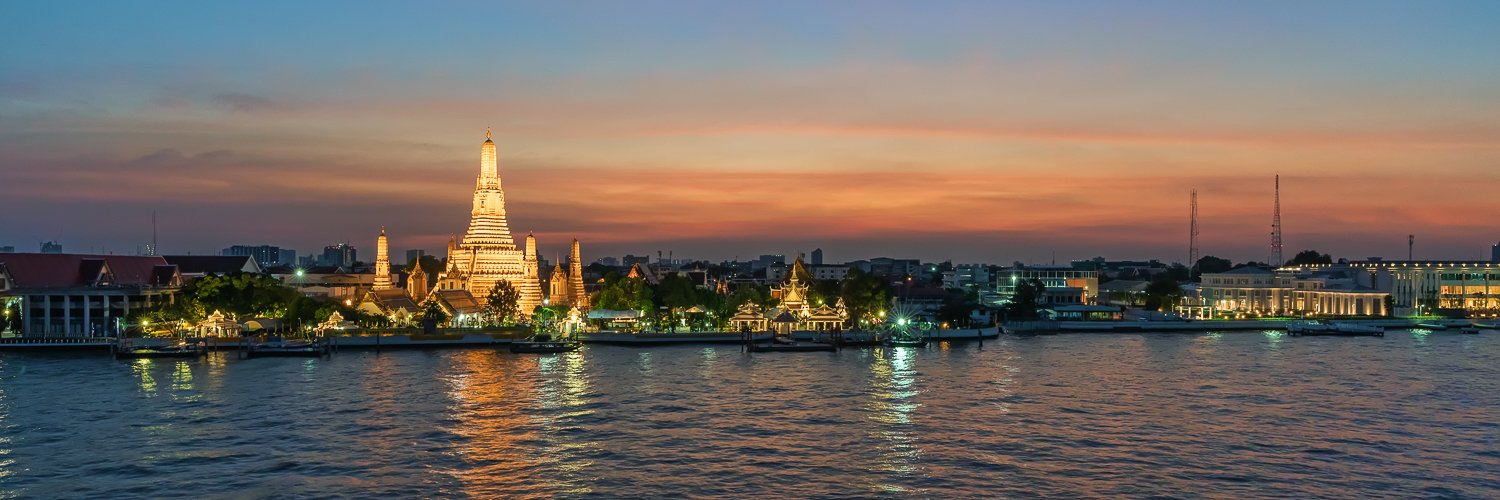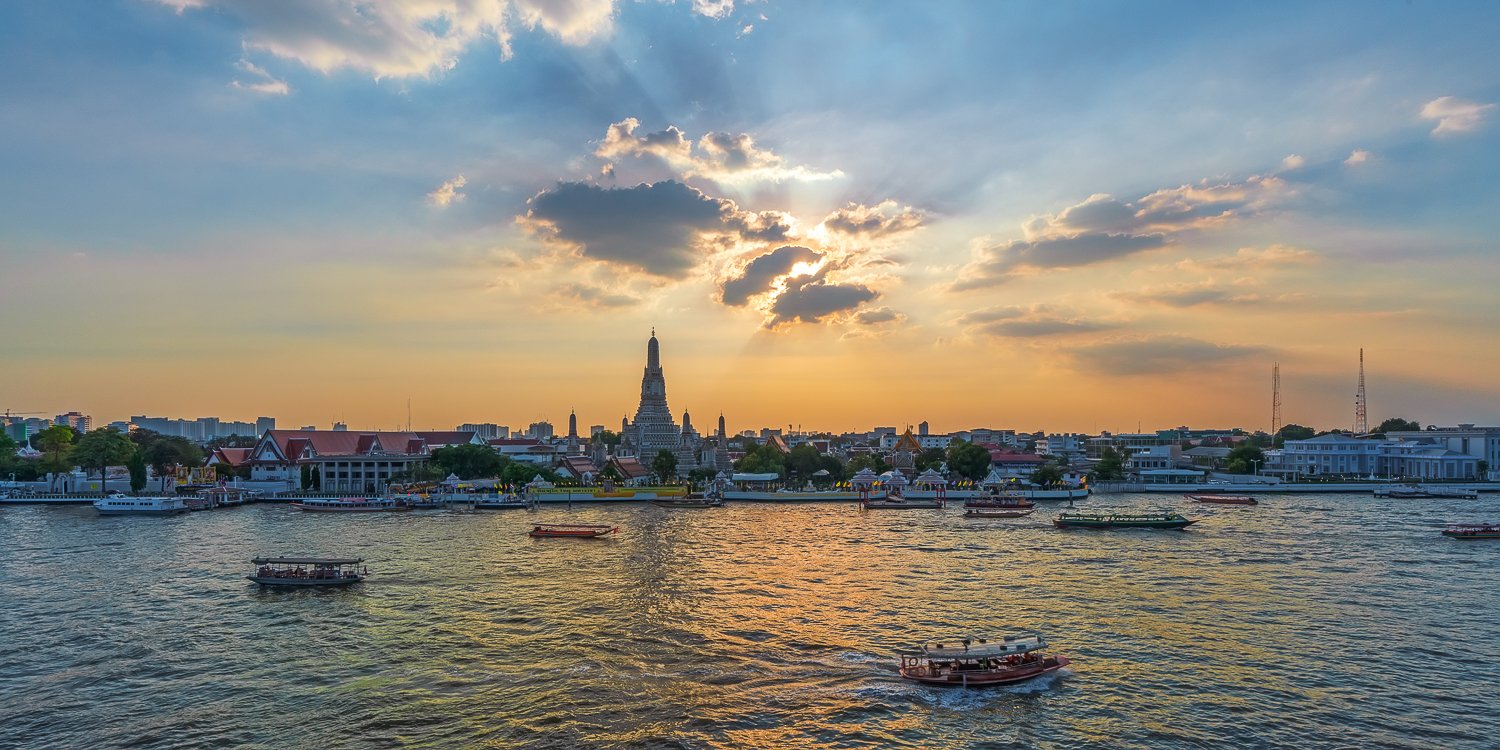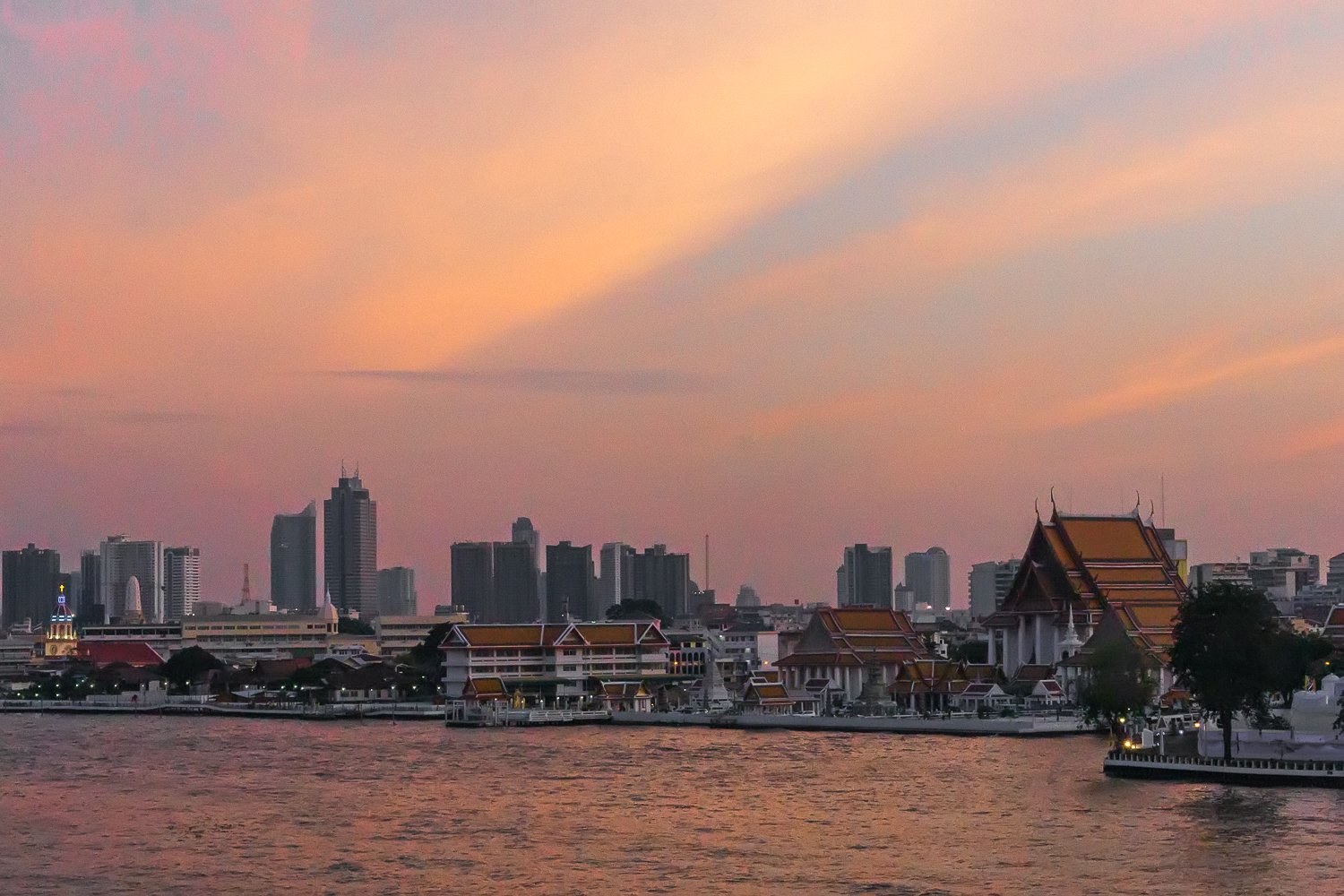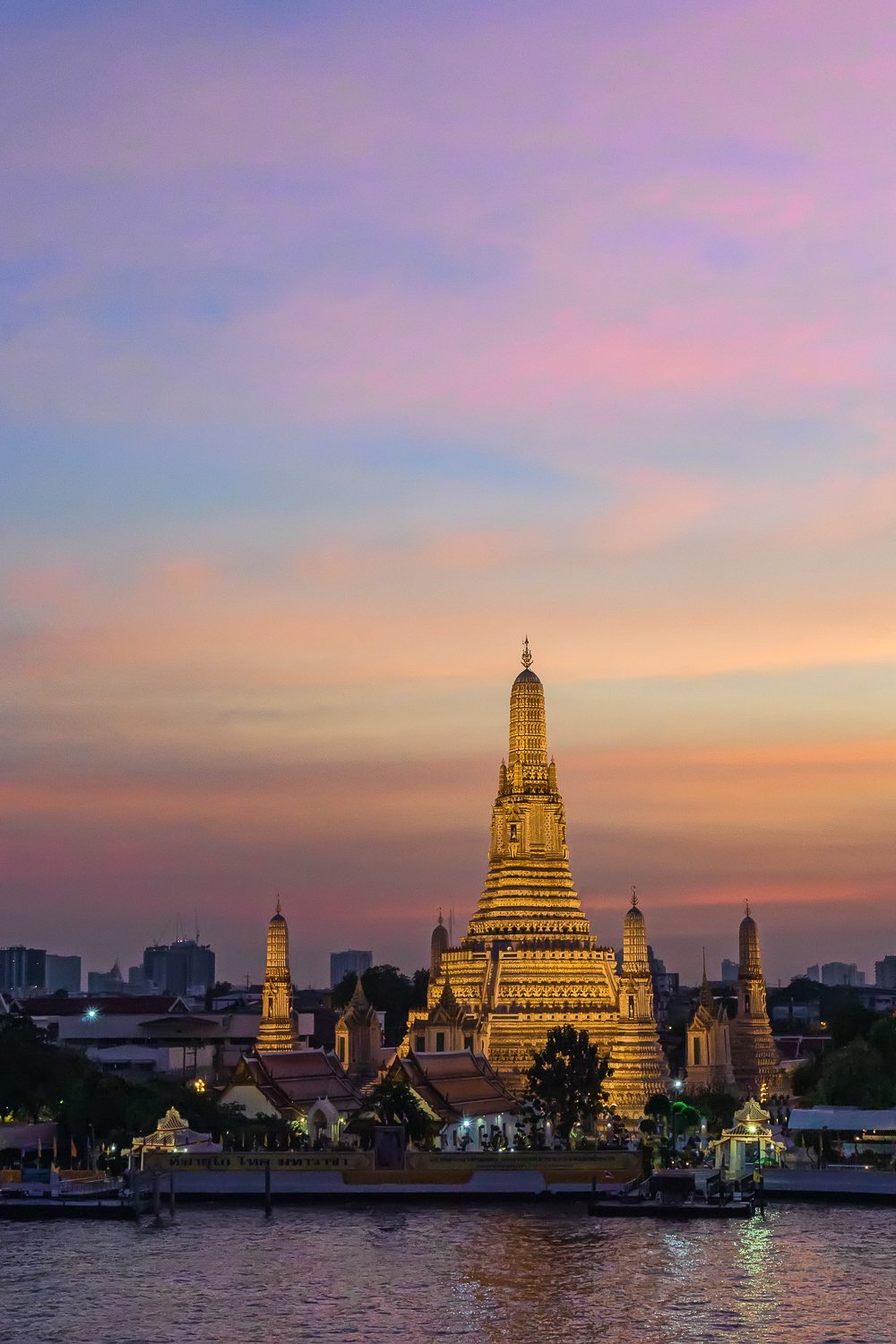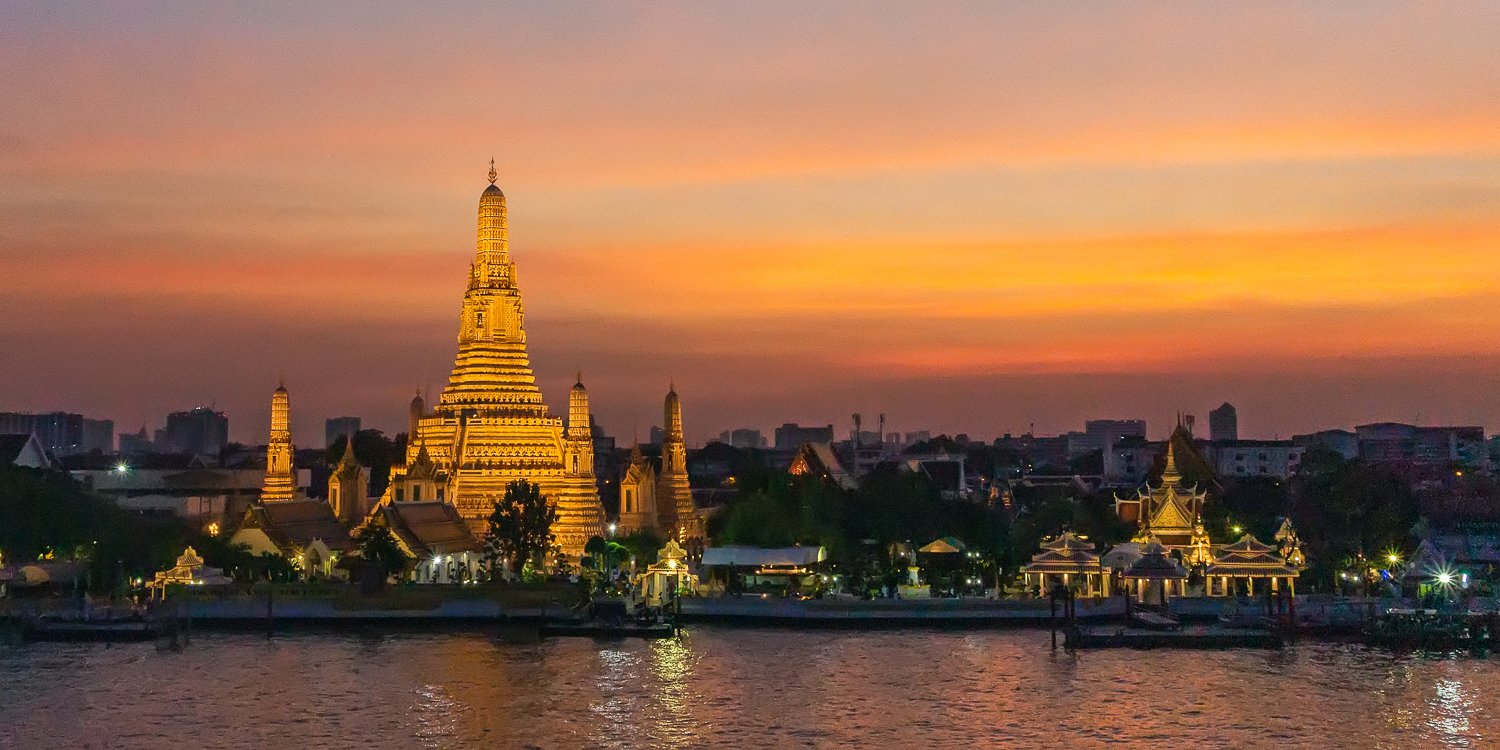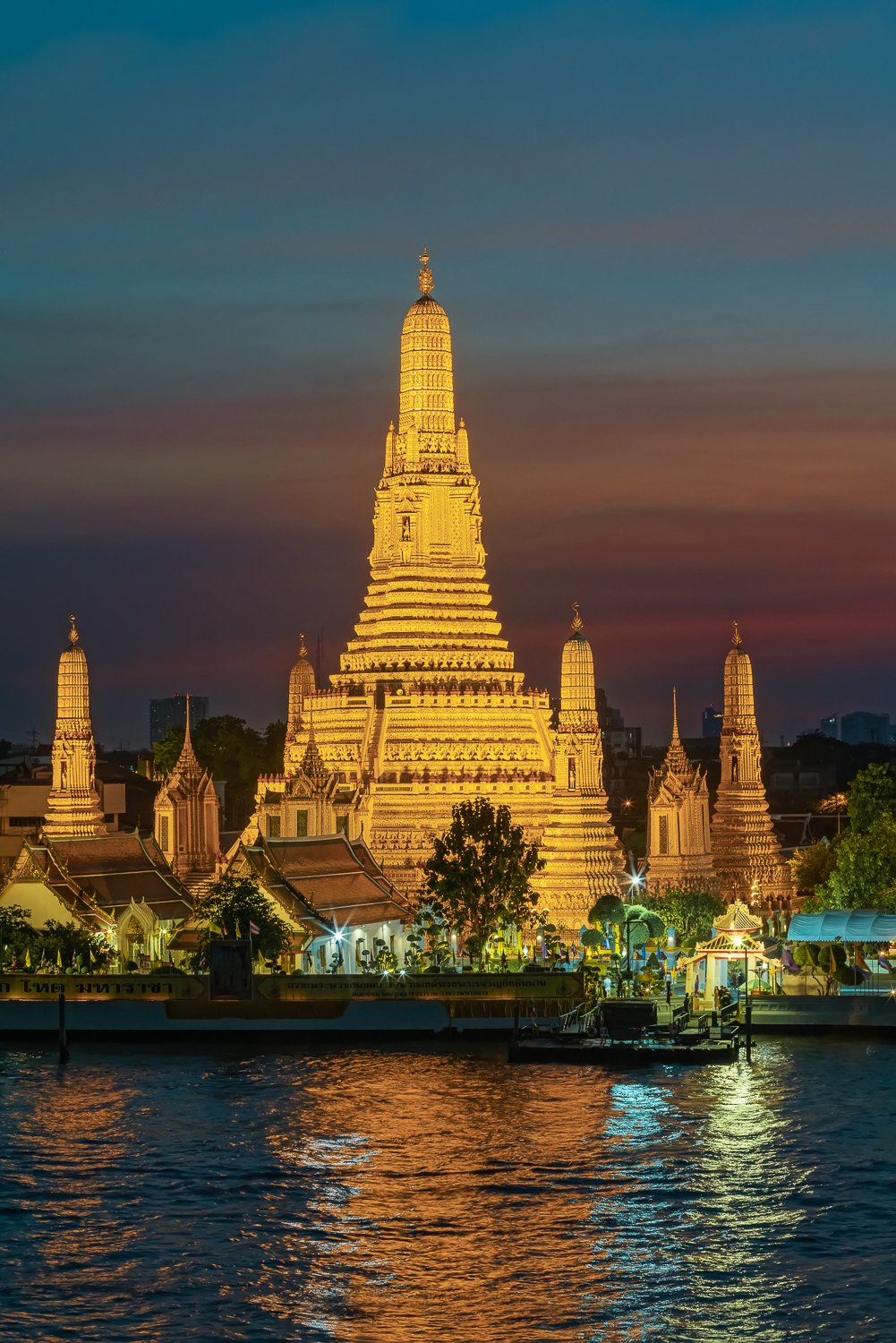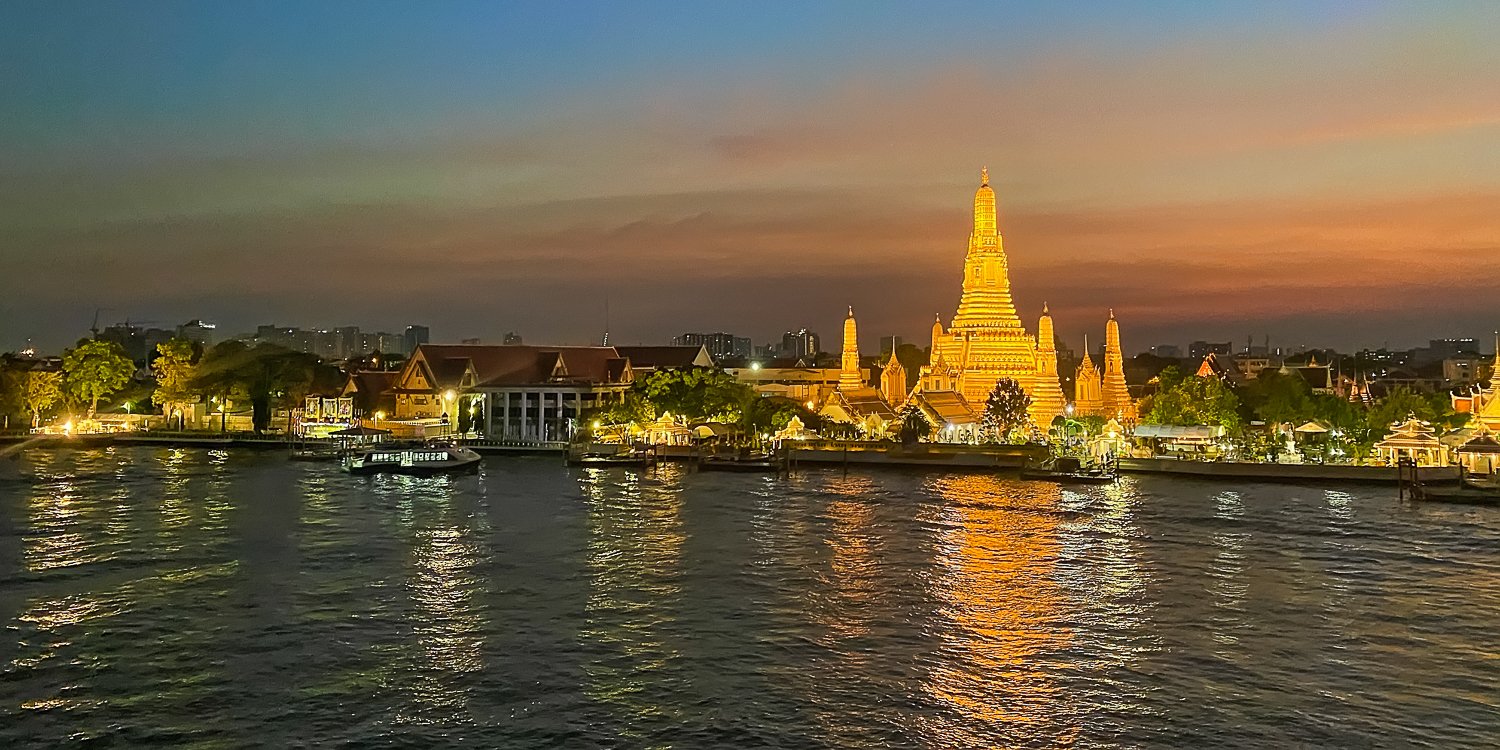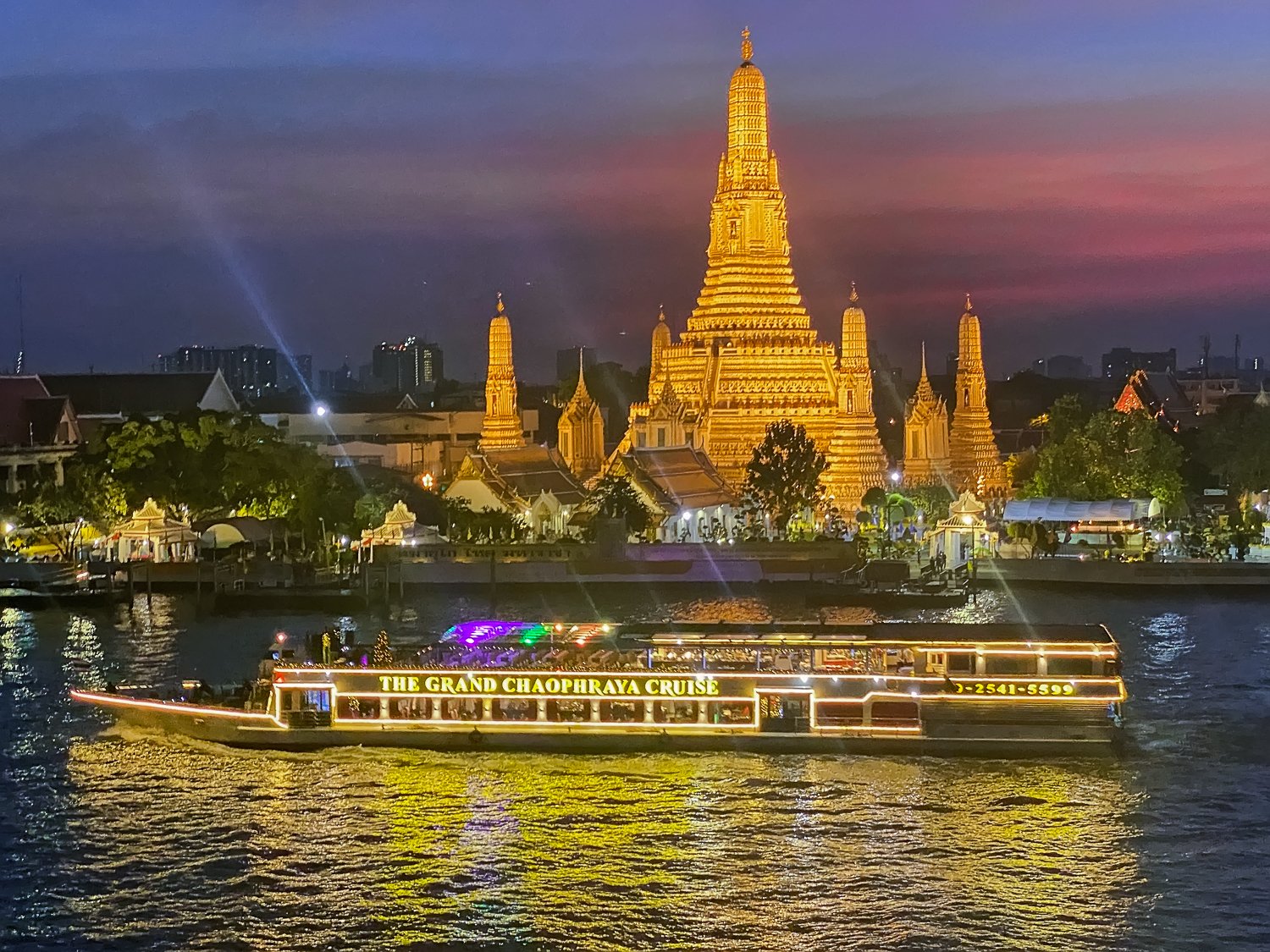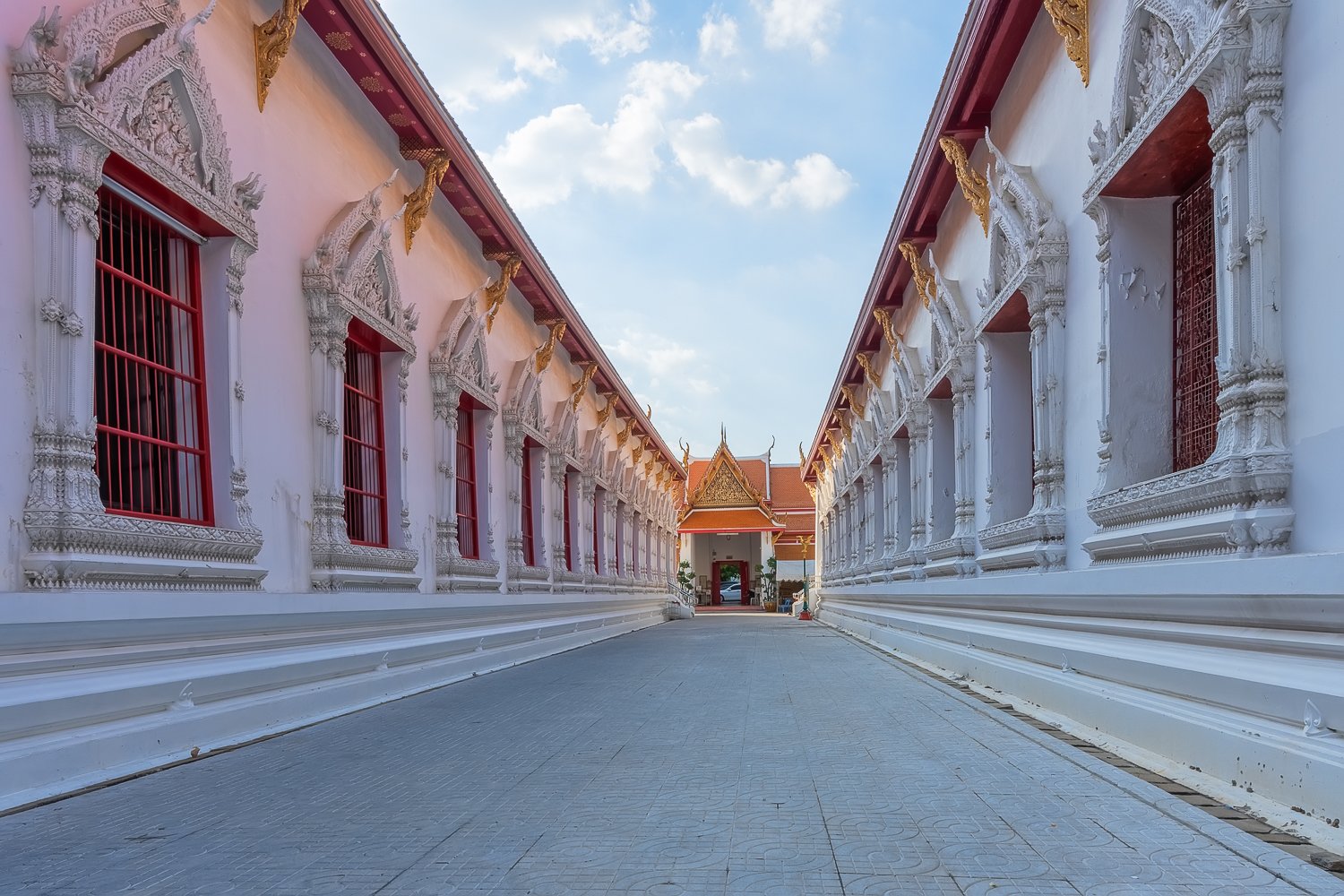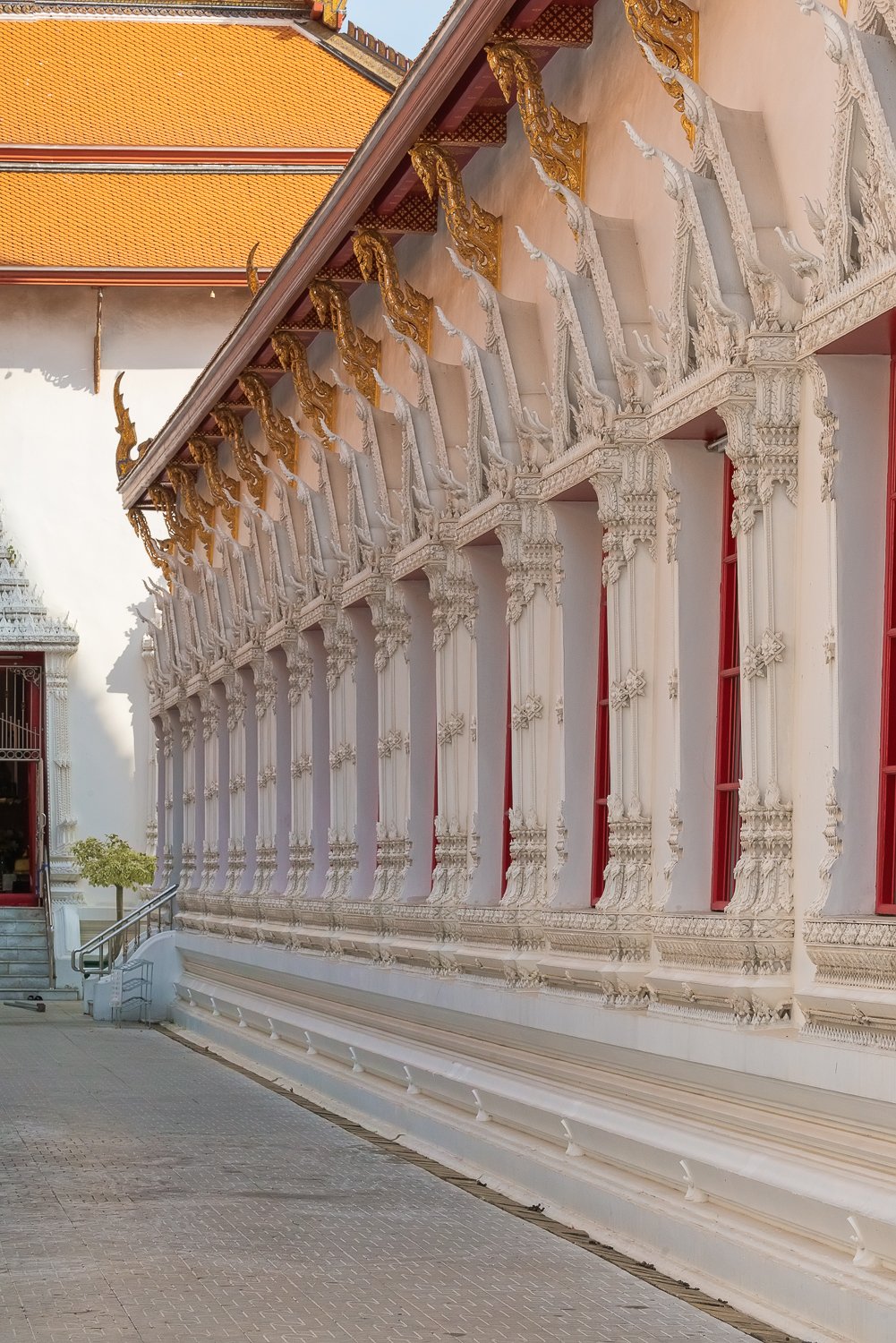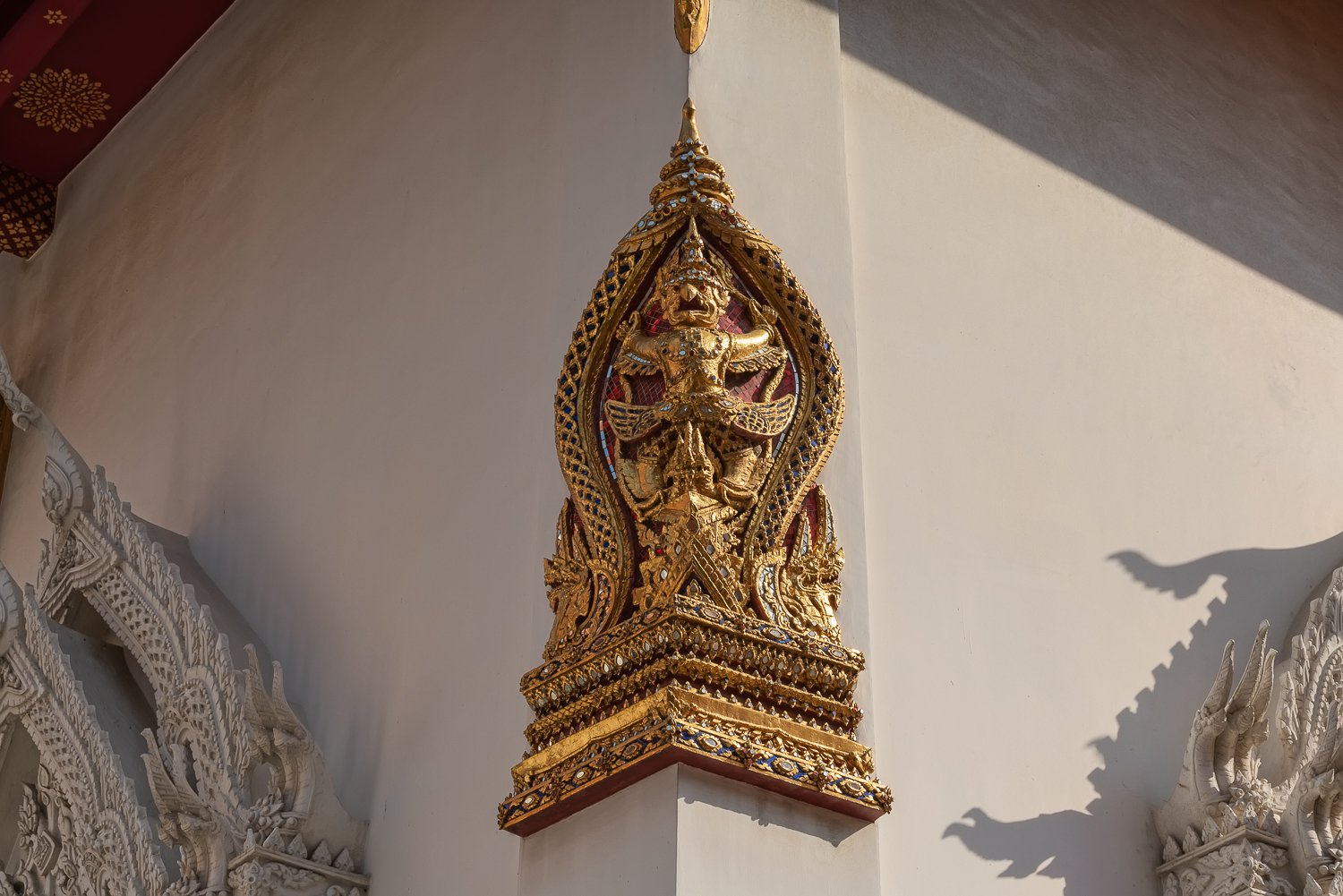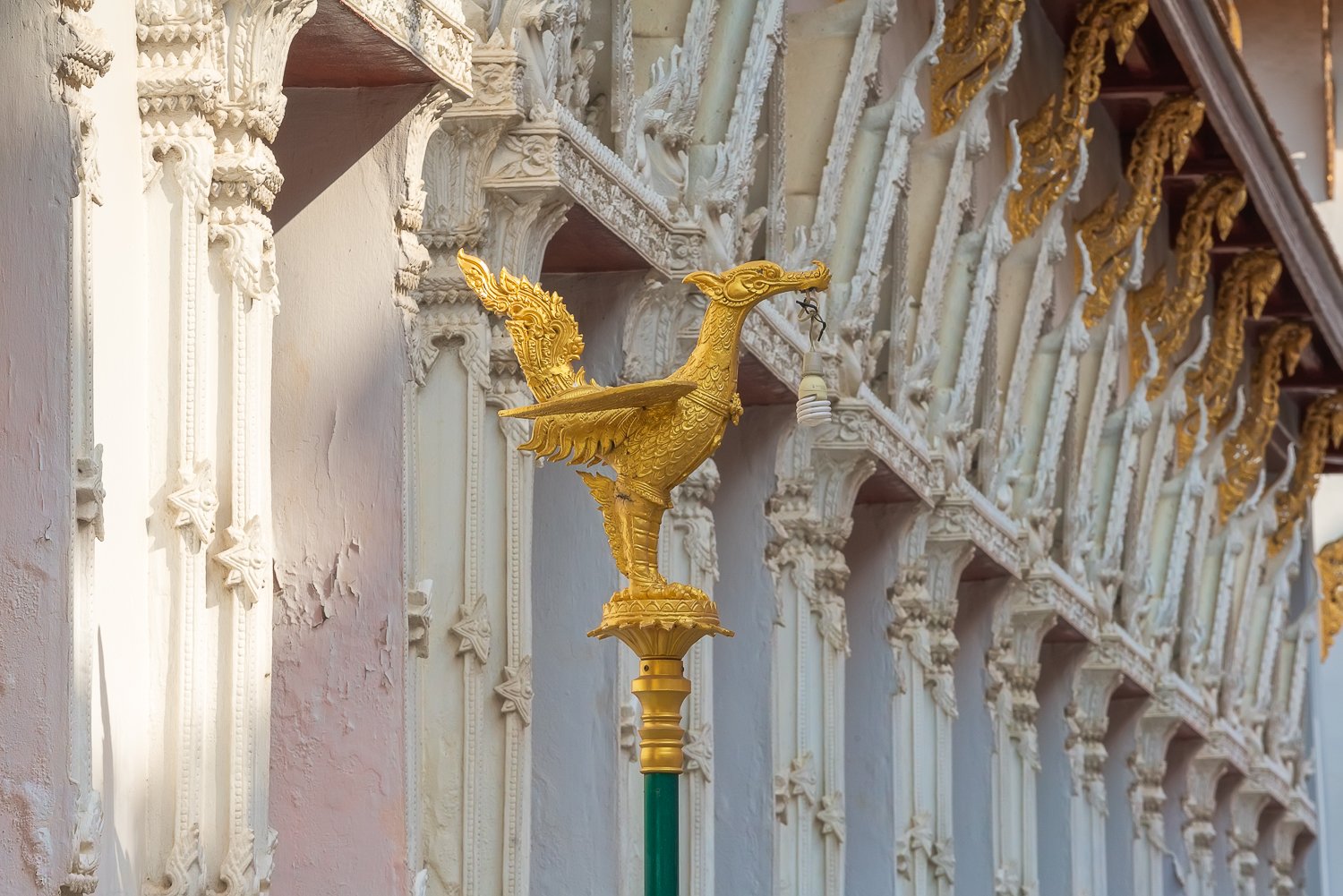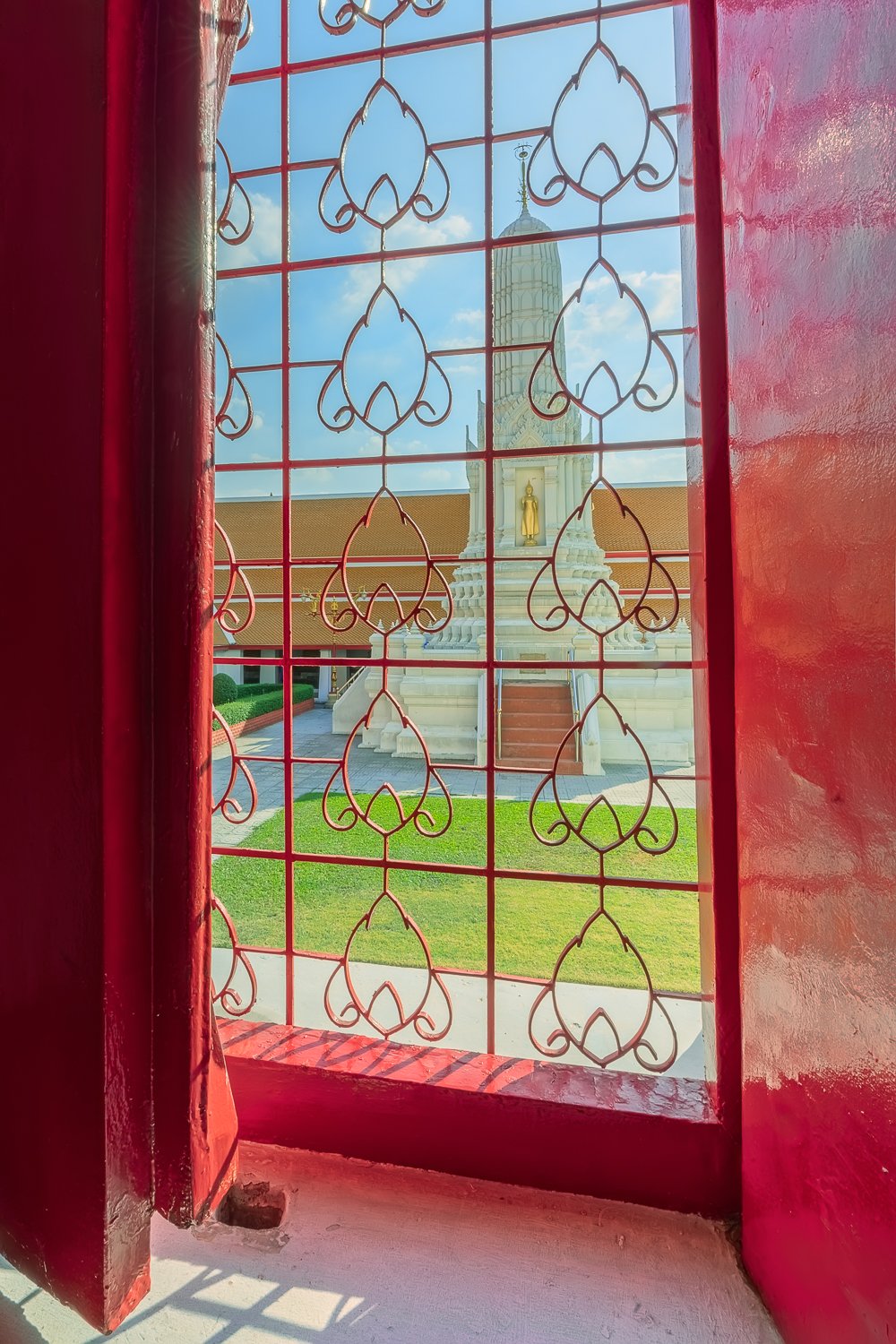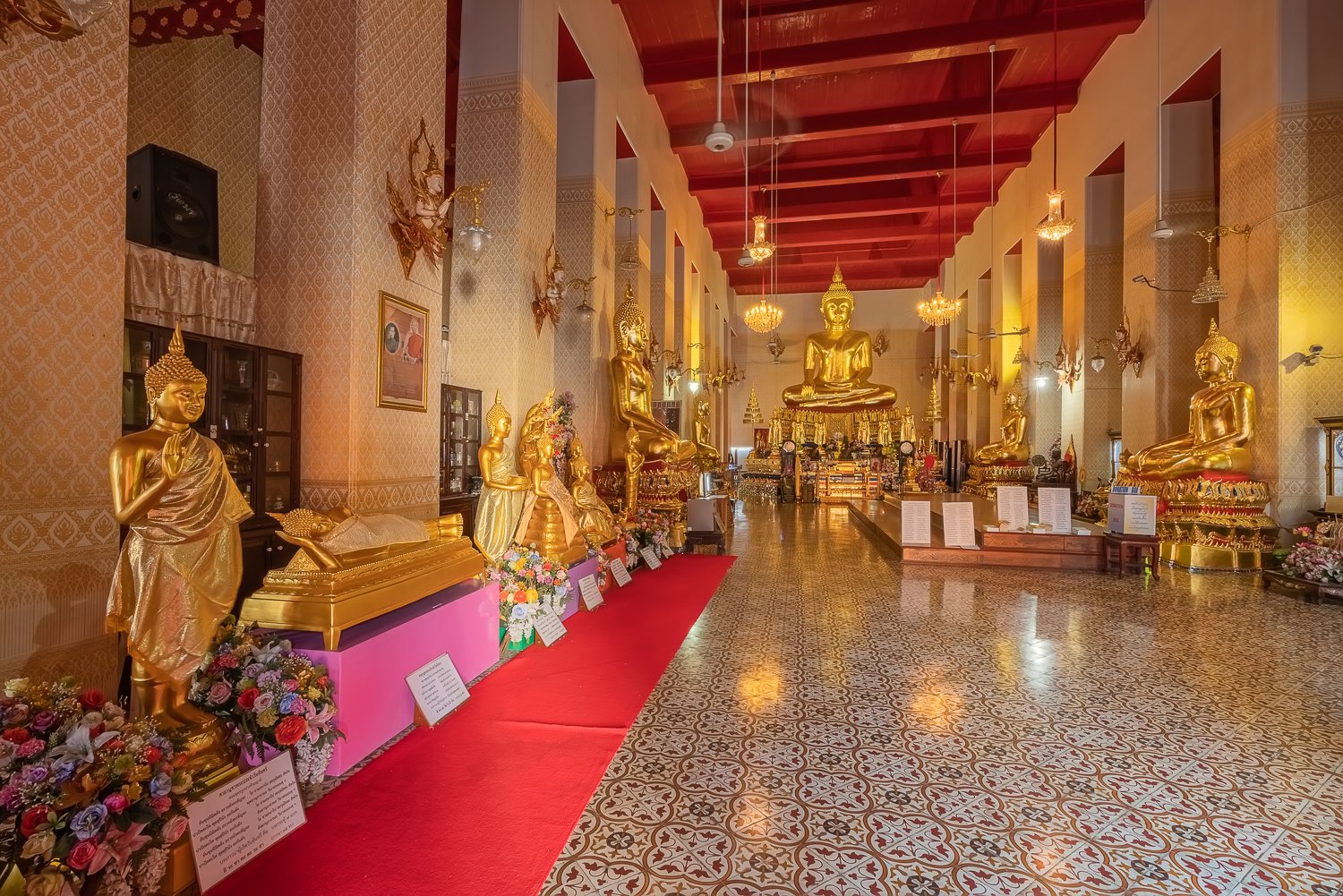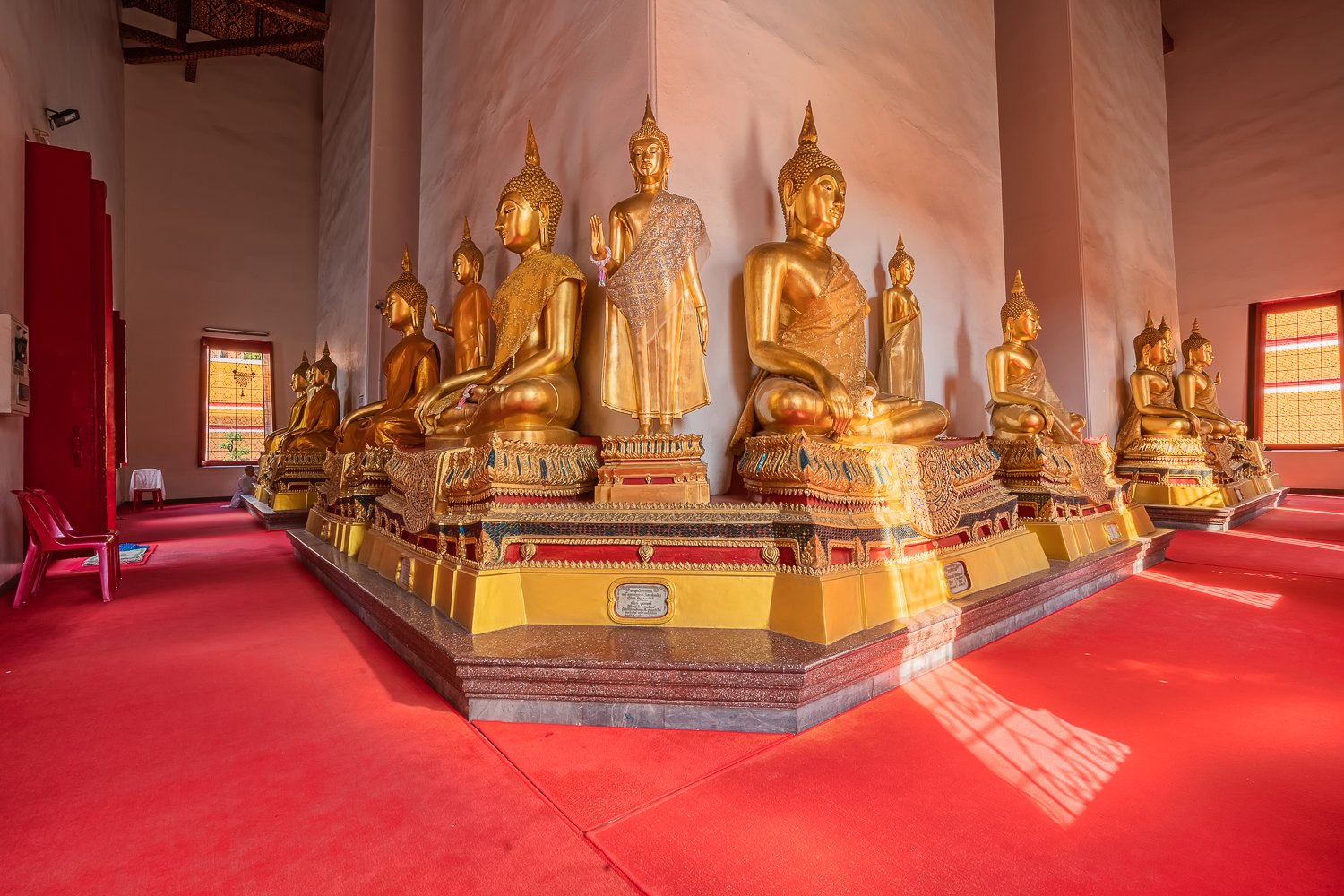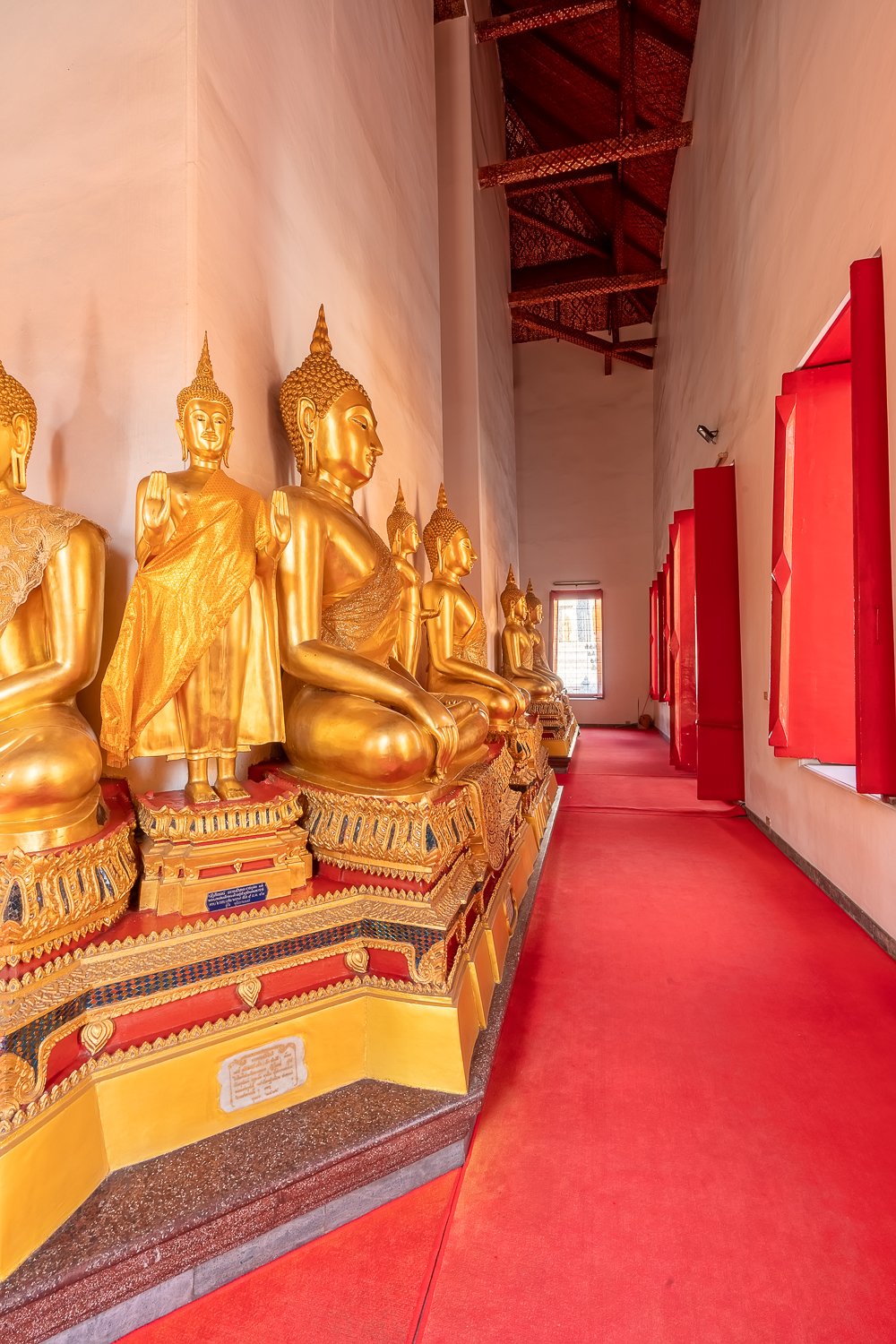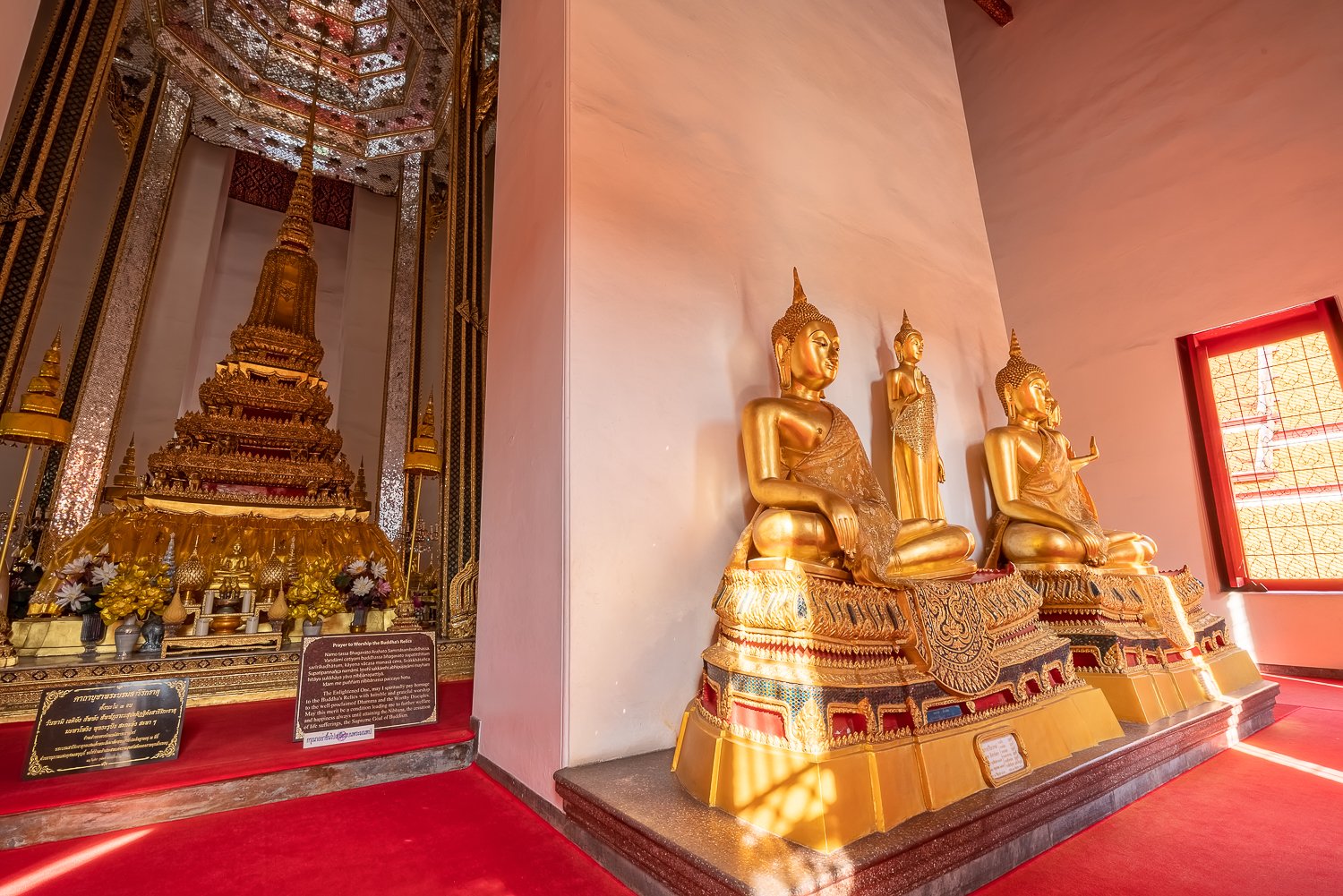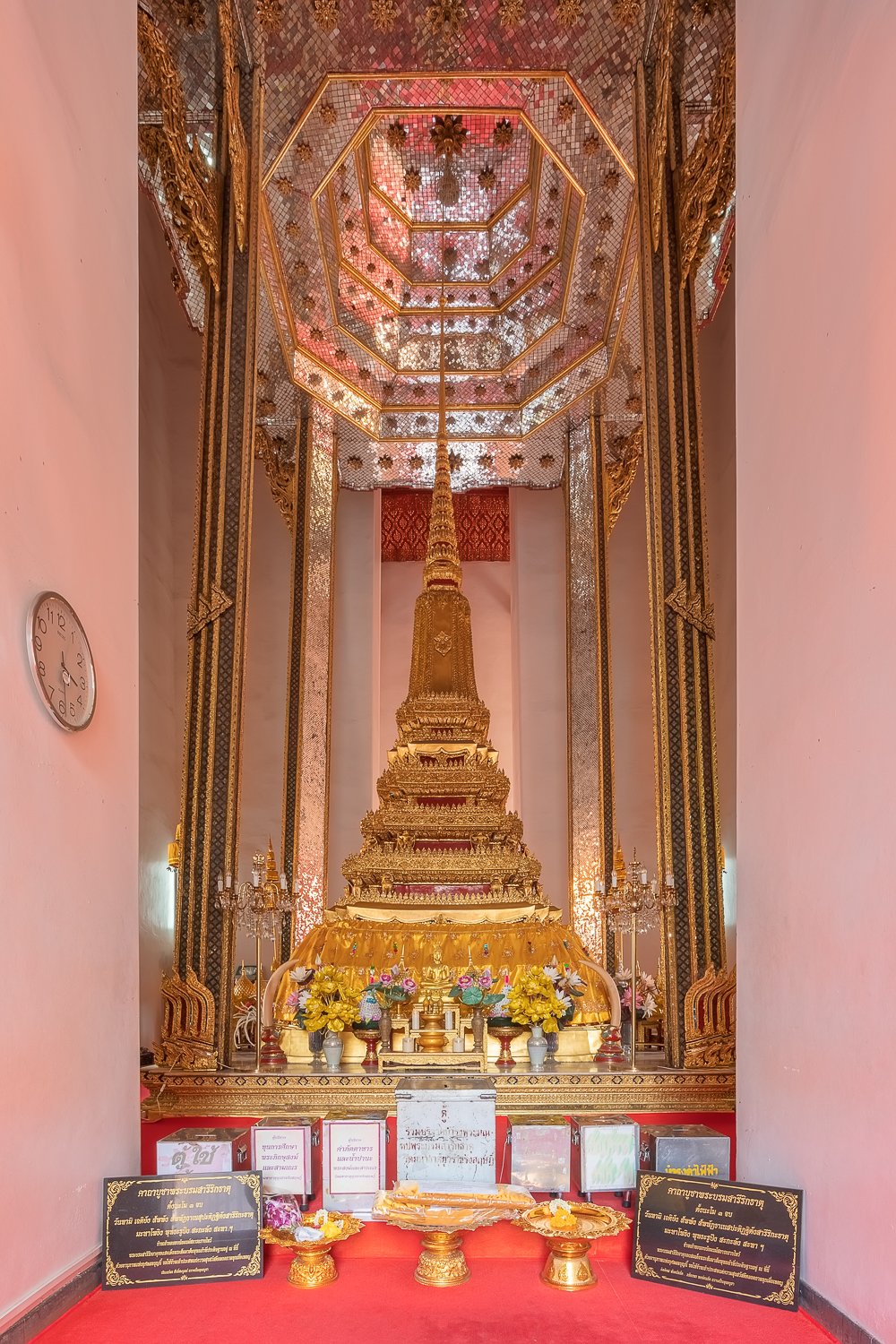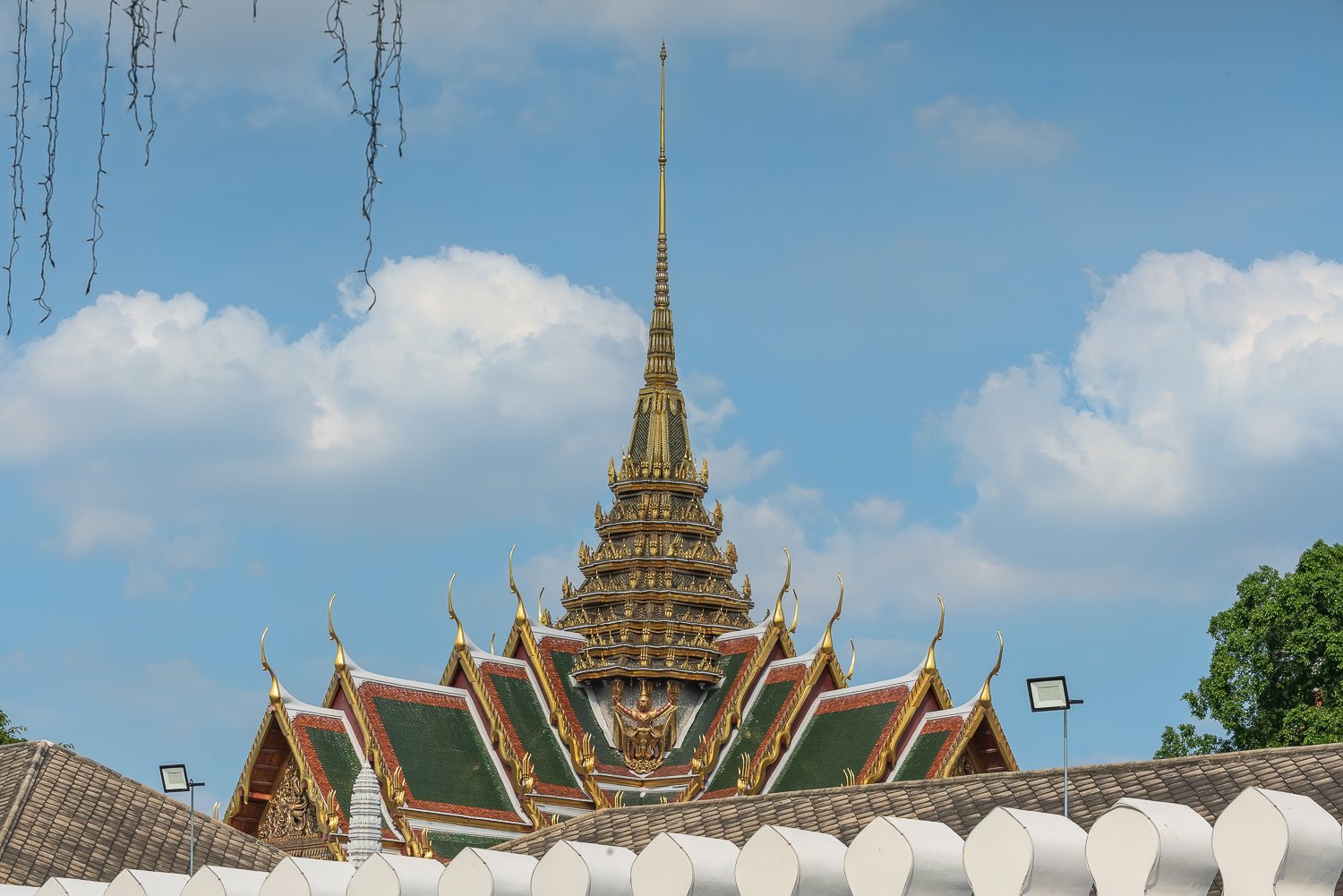We go back to the Chao Phraya river to, a bit perversely, watch Temple of the Dawn at dusk. We decided to watch the evening spectacle of light from the rooftop bar of the Sala Rattanakosin. As we arrive early, we get the best sits and - waiting for the sunset - we happily drink hectolitres of cocktails, mocktails, and beer.
Wracamy nad rzekę Chao Phraya, by nieco przewrotnie obejrzeć Świątynię Świtu o zmierzchu. Postanowiliśmy obejrzeć cowieczorny spektakl światła z baru na dachu hotelu Sala Rattanakosin. A ponieważ jesteśmy tu dość wcześnie, to mamy najlepsze możliwe miejscówki i - czekając na zachód słońca - radośnie wypijamy hektolitry koktajli (z i bez alkoholu), a Marcin także piwa.
I will not write too much as the pictures will tell the story best, but the sunset was beautiful and quiet, even though the traffic on the river was somewhat insane, and then the sanctuary lights went on and the Arun Temple looked just magnificent.
Nie będę się zbytnio rozpisywać, bo zdjęcia opowiedzą tą historię najlepiej, ale zachód słońca był piękny i spokojny, mimo że ruch na rzece był nieco szalony, a potem zapaliły się światła sanktuarium i świątynia Arun wyglądała po prostu wspaniale.

